By Rick VanSickle
Just when you think you’ve seen it all, a grape harvest like 2019 in Ontario comes along and blows that right out of the water.
“I my 30 years I hadn’t seen one like this,” says veteran Vineland Estates winemaker Brian Schmidt, whose 2020 vintage in Niagara will be his 30th. “If you’ve ever thought you had ‘seen it all’ in 30 years, you’d be wrong … Dead wrong!”
Note: Also in this report, a full assessment of Ontario wine vintages back to 1998.
The season started with a cool, wet spring that put the vintage generally behind by about two weeks across all appellations. The peak summer months were warm and sunny, with several heat waves that brought high humidity across southeastern and southwestern Ontario, and with some disease pressure in the vineyards.
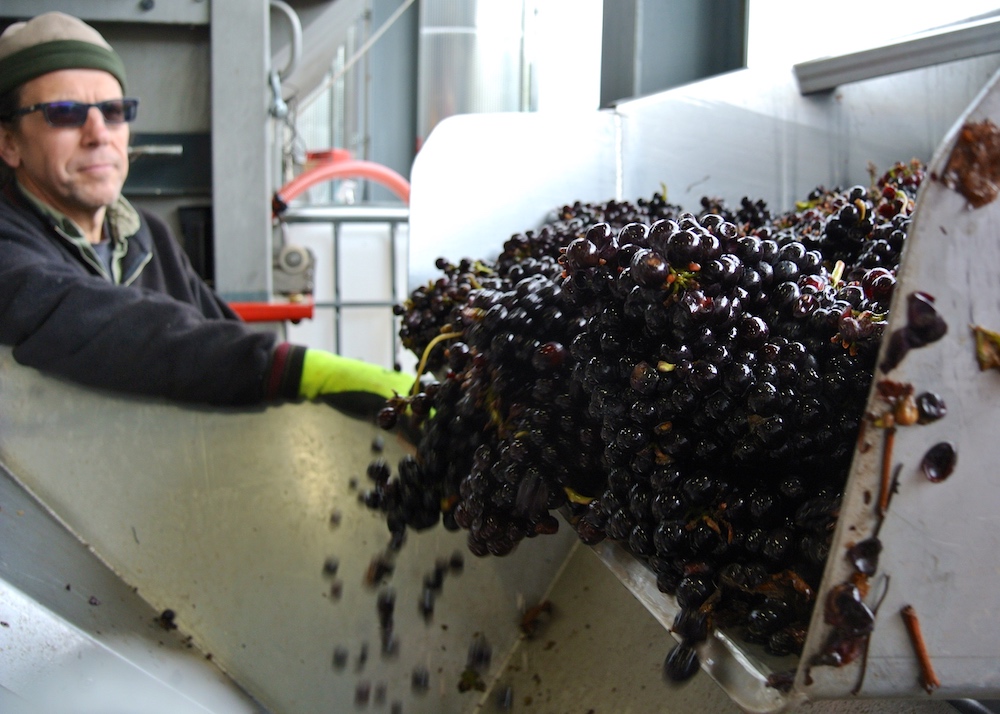
August was warm and intermittently stormy, leading into a comparatively quiet September, cool with some rain – but bringing decent conditions to finish off the summer and begin the harvest season.
Then it got weird. October was mild and wet and most wineries were able to get their key white varieties harvested and reported good results. Early-ripening Pinot Noir and Gamay also showed early promise, but a brutal cold snap in mid-November — including the earliest harvest on record for picking icewine on Nov. 12 — occurred before most the red Bordeaux varietals had reached optimal ripeness. If you were driving around wine country in late November-early December you could actually see Cabernet Sauvignon being harvested well after the first icewine pick. Many wineries picked fruit with a blanket of snow on the ground.
Says Thirty Bench winemaker Emma Garner: “All of this sums up to a challenging vintage in both the vineyard and winery! A year that a winemaker earns their stripes (or keeps the ones they earned last year).”
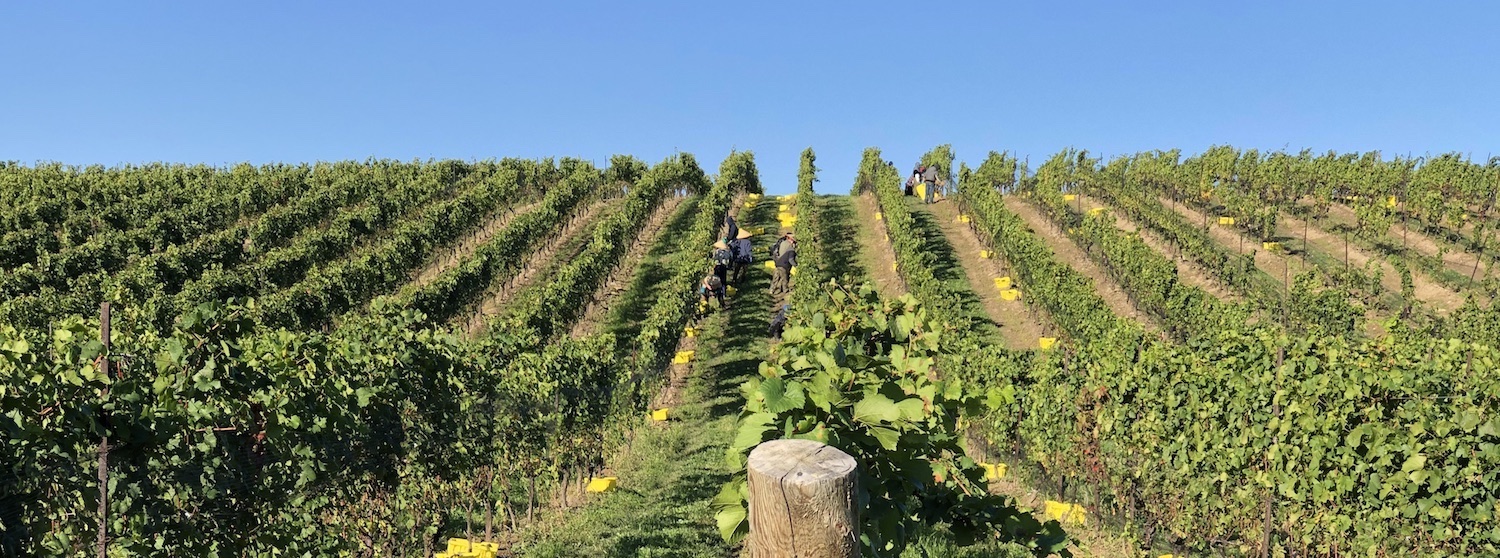
Foreign Affair winemaker (who is leaving Niagara in April to take the winemaker job at Road 13 in B.C.), summed it by saying: “Overall, I would say that 2019 was definitely a vintage that was made (or lost in some cases in the region) in the vineyard then refined and completed in the cellar. Those that went that extra mile throughout the growing season reaped their rewards once their fruit was brought in. The consumer can expect some fantastic wines from the 2019 vintage from good producers.”
Or, as Flat Rock Cellars winemaker David Sheppard says: “The sorting table was a vital piece of equipment this year.”
More than a few winemakers compared 2019 to the 2009 vintage, which was very good for early-ripening varietals such as Pinot Noir, but a challenge for late-ripening grapes. Rob Power, winemaker at both Creekside and Queenston Mile wineries in Niagara, says of the vintage: “Patience is a virtue. Sauv blanc is a great example of the patience principle — first pick was Sept. 19, last pick was Oct 25. The last vintage with that long an interval was 2009.”
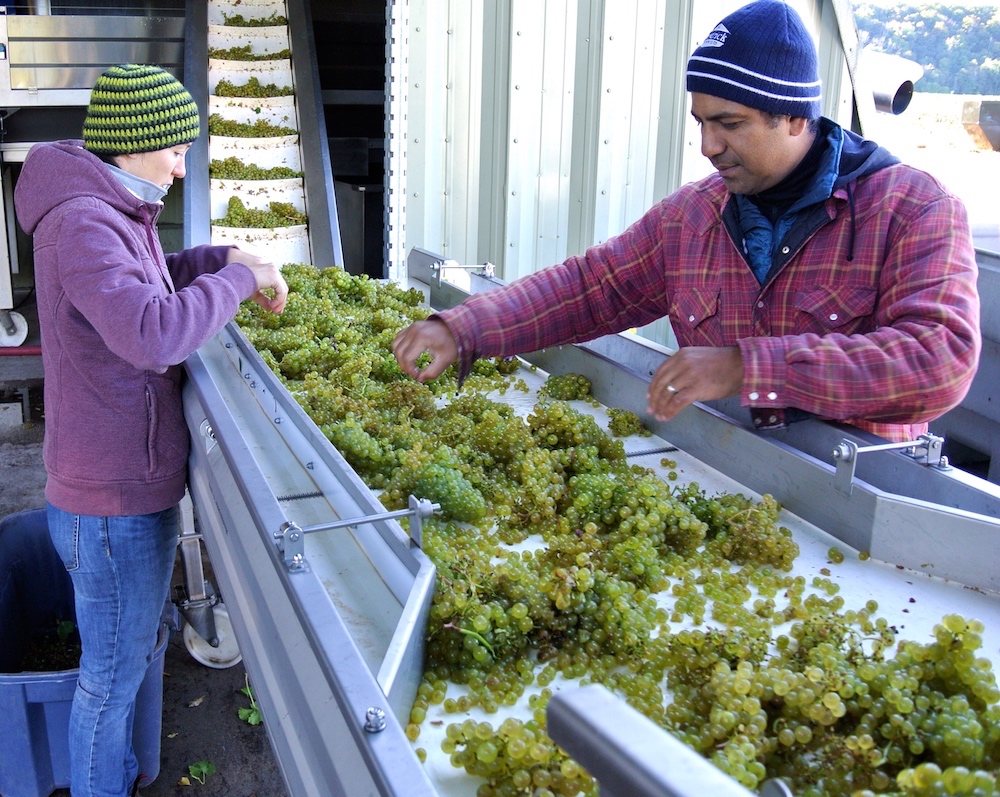
We asked a number of Ontario winemakers and growers for their thoughts on the 2019 vintage. We have reports from Niagara, Prince Edward County, the Ottawa Valley and Hockley Valley. We have left their thoughts as they sent them to Wines In Niagara. We are grateful for the thoughtful, honest assessments from winemakers. This report is designed to give consumers a snapshot of the vintage, but not a complete picture until we start seeing the magic that happens in the winery as the wines make their way to bottle.
Note: We have a special column in Part II of our Harvest 2019 Report by Pillitteri viticulturist Jamie Slingerland with a focus on icewine. It will be posted soon.
But first, the official Vintage Report from VQA Ontario:
Ontario 2019 Vintage Report
for Niagara, Lake Erie North Shore
and Prince Edward County
Conditions
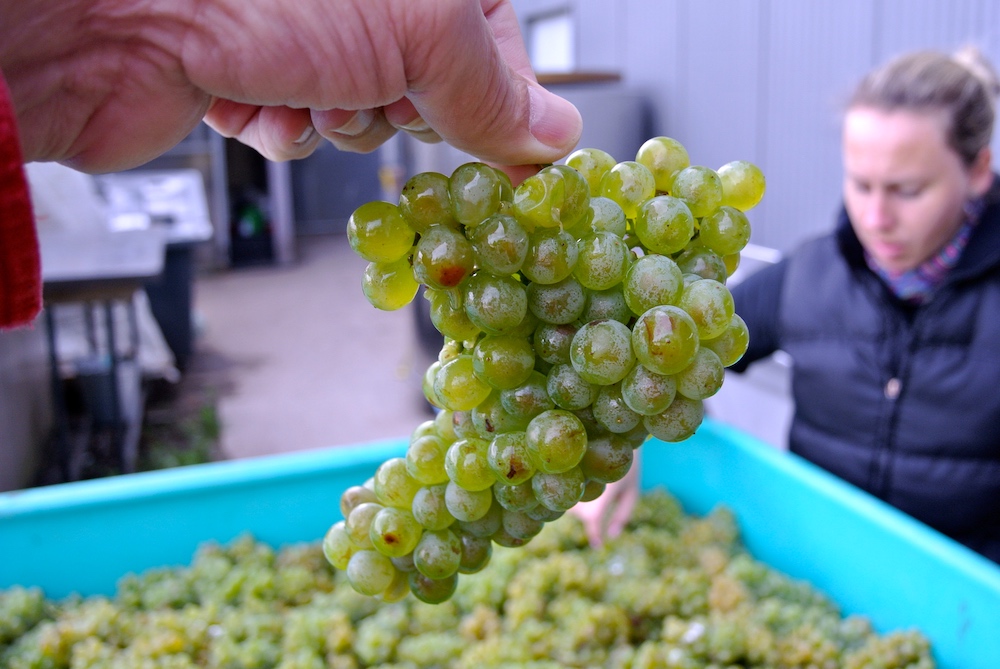
Weather conditions across Ontario for 2019 were generally cooler and wetter than normal but overall the season was good. The growing season in most areas was slightly delayed, but the season ended well thanks to a sunny fall.
January started off mild but was a month full of significant weather events including extreme cold and heavy snowfall, which continued throughout February, while the rapid thaw in March was the major weather story of the spring.
Temperature fluctuations throughout March allowed for significant snow melt and led to high spring water levels for the start of the growing season. April and May continued with high moisture, but for the well-draining soils of Niagara Peninsula and Lake Erie North Shore, and the stony Prince Edward County soils, this was not a major concern for wine growers. The result was a slight delay to the start of the growing season across all three viticultural areas.
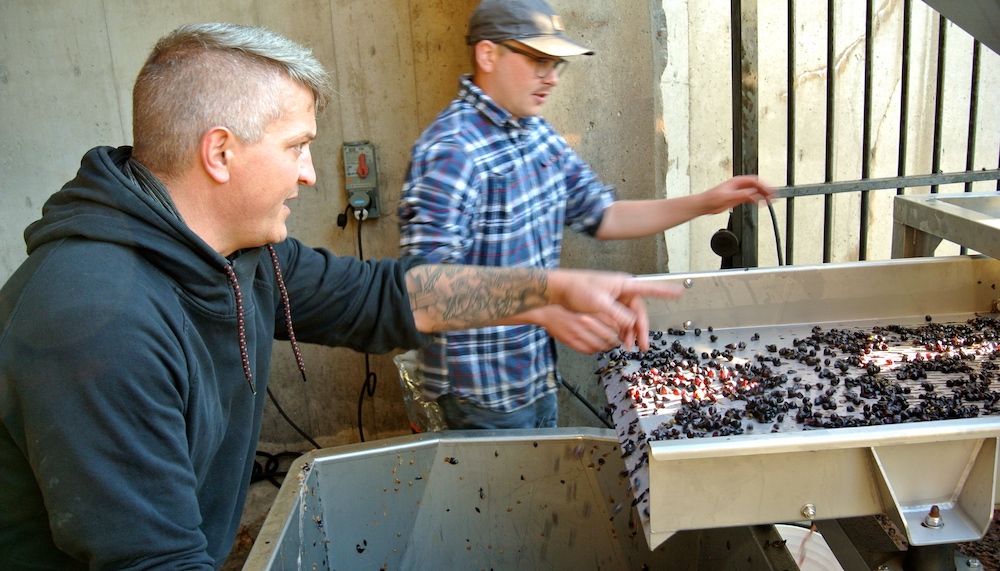
June brought summer weather with normal temperatures across Ontario and the growing season got under way. Flowering occurred quickly as the grapevines accelerated their growing to make up for the late start. Notably, some growers reported that in the Beamsville Bench and Lincoln Lakeshore sub-appellations, flowering occurred across all grape varieties over a single four-day span.
July was warm and sunny, punctuated by three short but intense heat waves, complemented by high humidity across southeastern and southwestern Ontario. Two significant rainfalls occurred in the month, maintaining soil moisture and supporting developing vines.
August was warm and intermittently stormy, leading into a comparatively quiet September, cool with some rain – but bringing decent conditions to finish off the summer and begin the harvest season.
Harvest
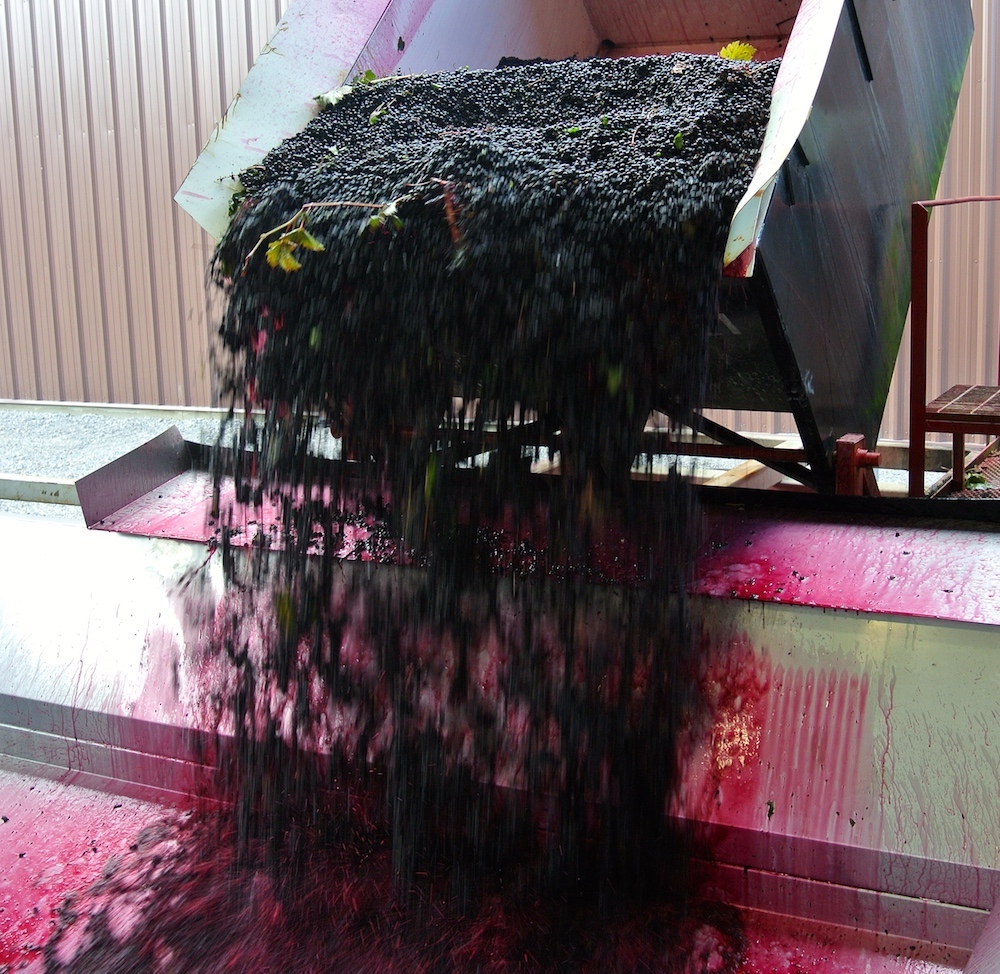
Heading into harvest, the weather was generally cool and sunny. This cool weather, combined with low humidity and sunshine provided a boost for grapes in terms of phenolic ripeness and prevented breakdown of fruit allowing an extended period for grapes to fully ripen.
October weather was mild but damp, followed by an unusually early cold snap in mid-November. Most white varieties were harvested early, with winemakers reporting excellent quality. Yield reductions were common for many of the red varieties to ensure optimal ripeness, particularly for later maturing varieties. Harvest extended into early December, sometimes taking place in the snow.
With the early cold, several wineries harvested Icewine grapes on Nov. 12 – the earliest date recorded by VQA Ontario. Preliminary registrations for Icewine are 5,972 tonnes.
Wine expectations
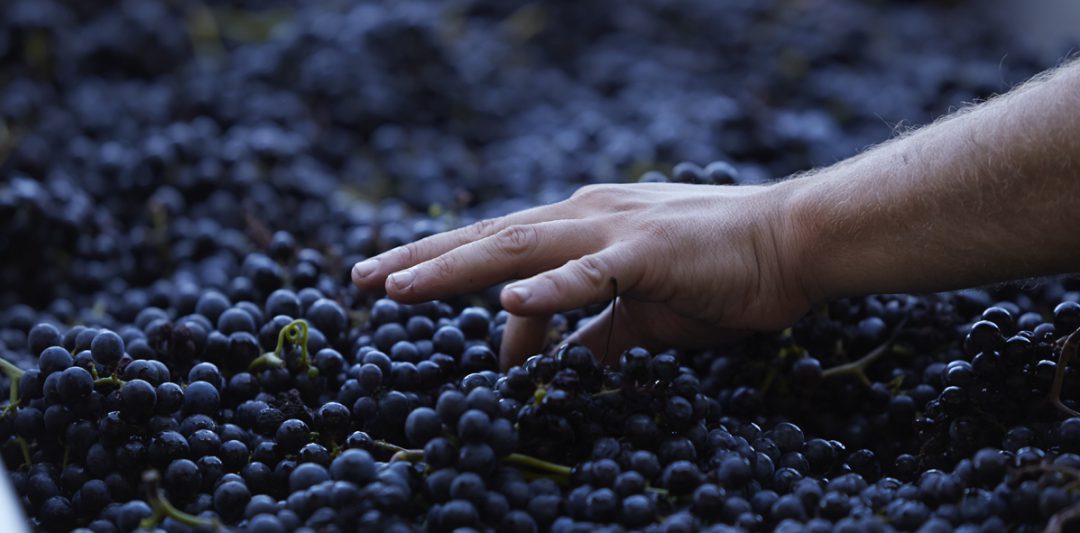
The outlook is very good for wines from the 2019 vintage. We can expect a full range of exceptional white wines defined by crispness, acid and fruit. Early reports suggest that 2019 may be a standout vintage for Pinot Noir and fuller bodied reds should also show well as a result of the carefully managed harvest, and with some red grapes even having the benefit of the concentrating effect of freeze-thaw that comes with being harvested late in the season.
Thoughts from Ontario
winemakers and growers
on harvest 2019
Niagara
David Sheppard, winemaker
Flat Rock Cellars
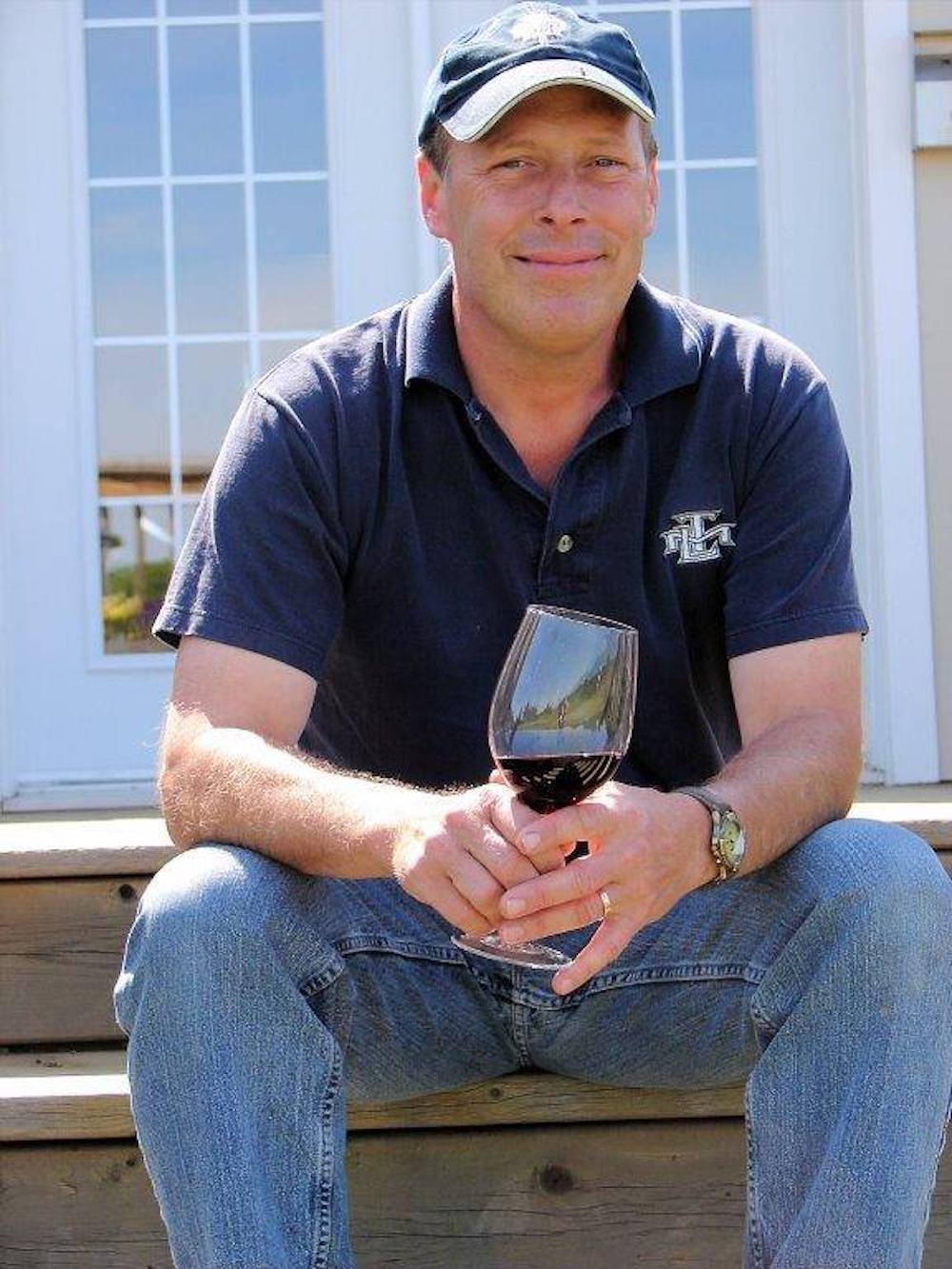
The late start to the growing season in 2019 after a very cool, wet April, May and June had a real impact on harvest parameters in September and October. Although the sunshine and warmth of July and August helped the vines gain back some lost ground, many varieties did not perform ideally.
Despite the spike in sugar and phenolic ripeness in the weeks and days before harvest, the acids remained very high. Now that the wines (reds in particular) are tucked away in barrels, their evolution has made for some challenging winemaking. An atypically high proportion of the wines’ natural acidity this year was comprised of malic acid causing low pH and high total acidity at the time of harvest. Now that the reds have gone through a full malolactic fermentation, the pHs have spiked upwards and the total acidity dropped substantially.
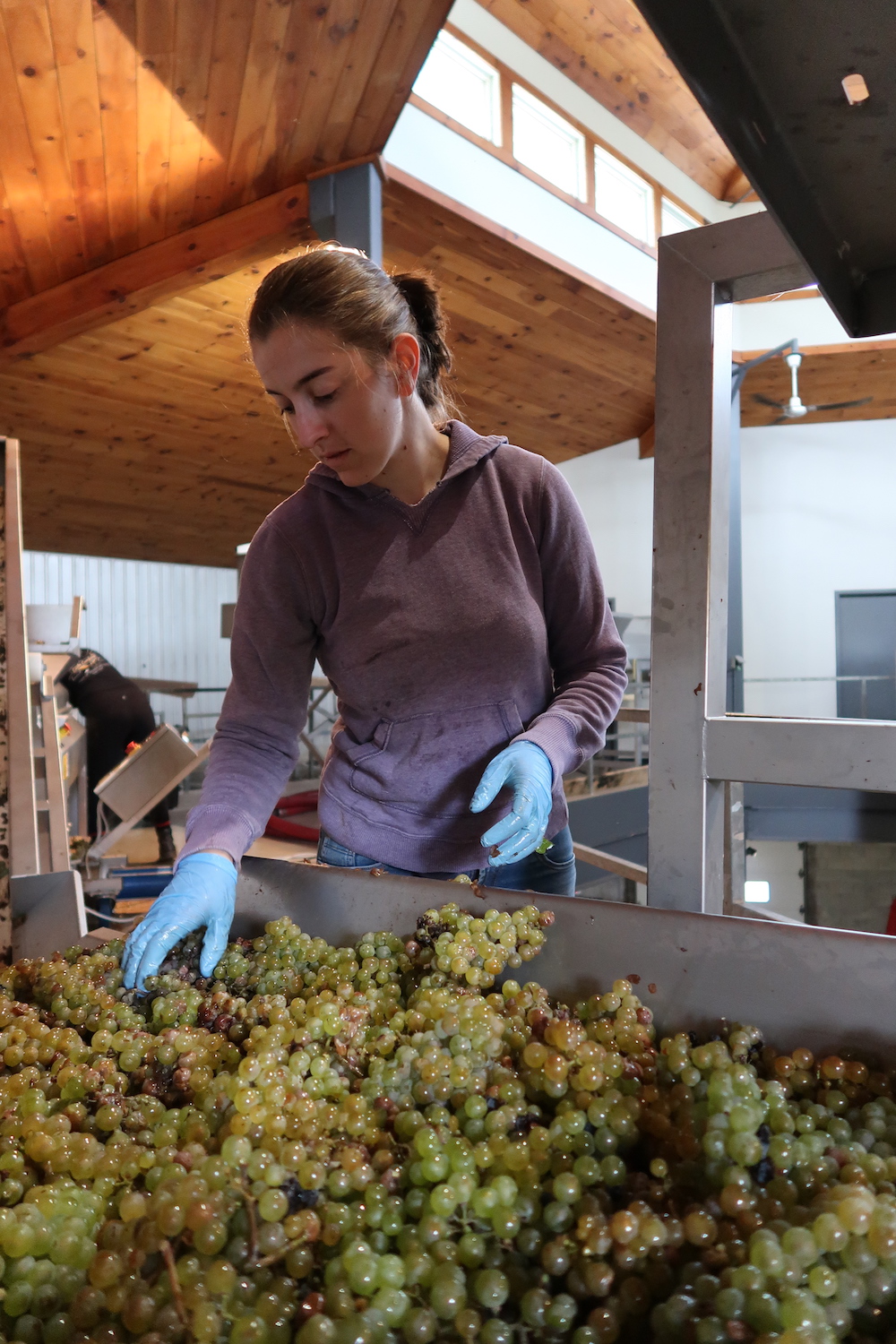
Varieties such as Riesling truly shone this year with enough sugar, but with wonderfully racy acidity. In the cellars these wines are showing real fresh, clean flavours and aromas, and wonderful vibrant and palate-cleansing acidity. The high malic portion of the acid make up plays right into Riesling’s hands.
The abnormally high amount of moisture in the air and in the soil from such a wet spring/early summer made for some higher than normal (and normal is bad enough) disease pressure. As you will see from the photos provided, the sorting table was a vital piece of equipment this year.
Rob Power, winemaker Queenston Mile and Creekside Estate Winery
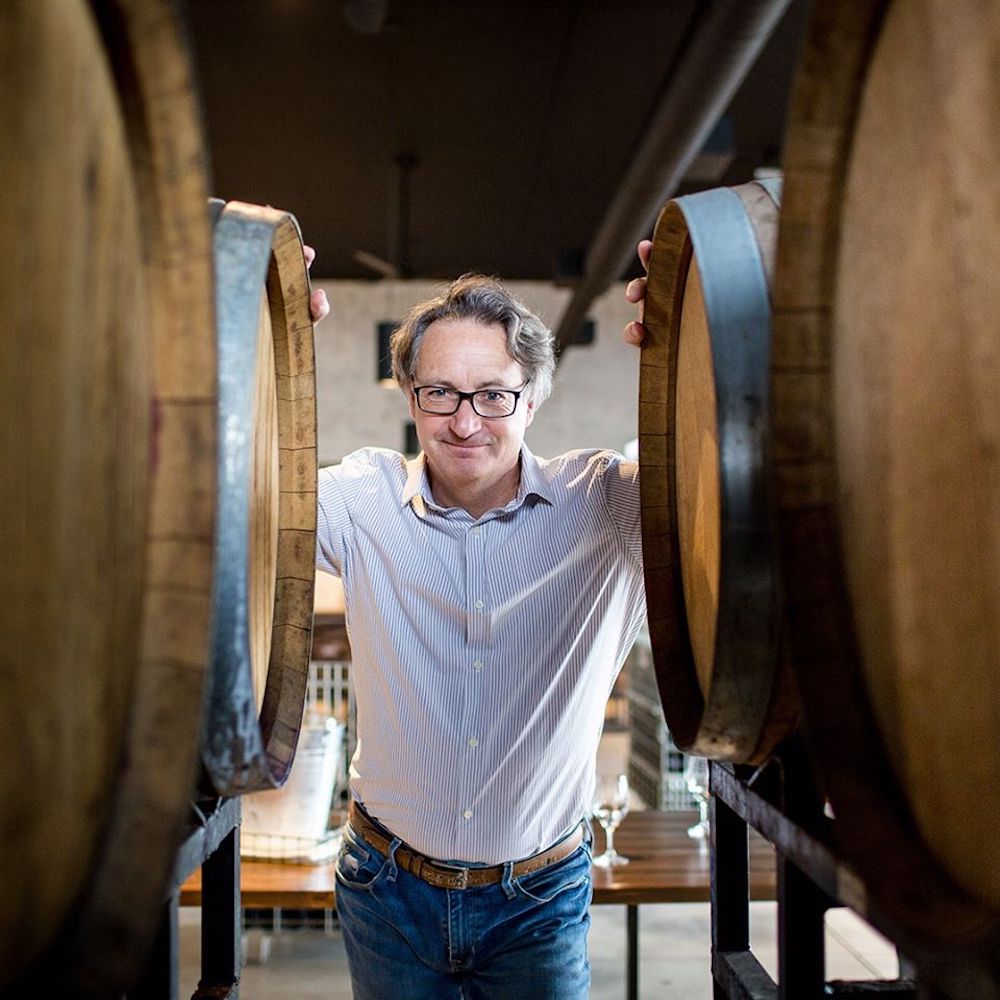
An old Ian Thomas song kept running through my head during 2019 vintage: “Patience is a virtue, tried and proven …”
That cold wet spring we had put us behind the 8-ball. We were 10-14 days behind normal on Labour Day, so we had to wait for acids to come down and flavours to come around. Most vineyards did, eventually.
Sauv blanc is a great example of the patience principle — first pick was Sept. 19, last pick was Oct 25. The last vintage with that long an interval was 2009.
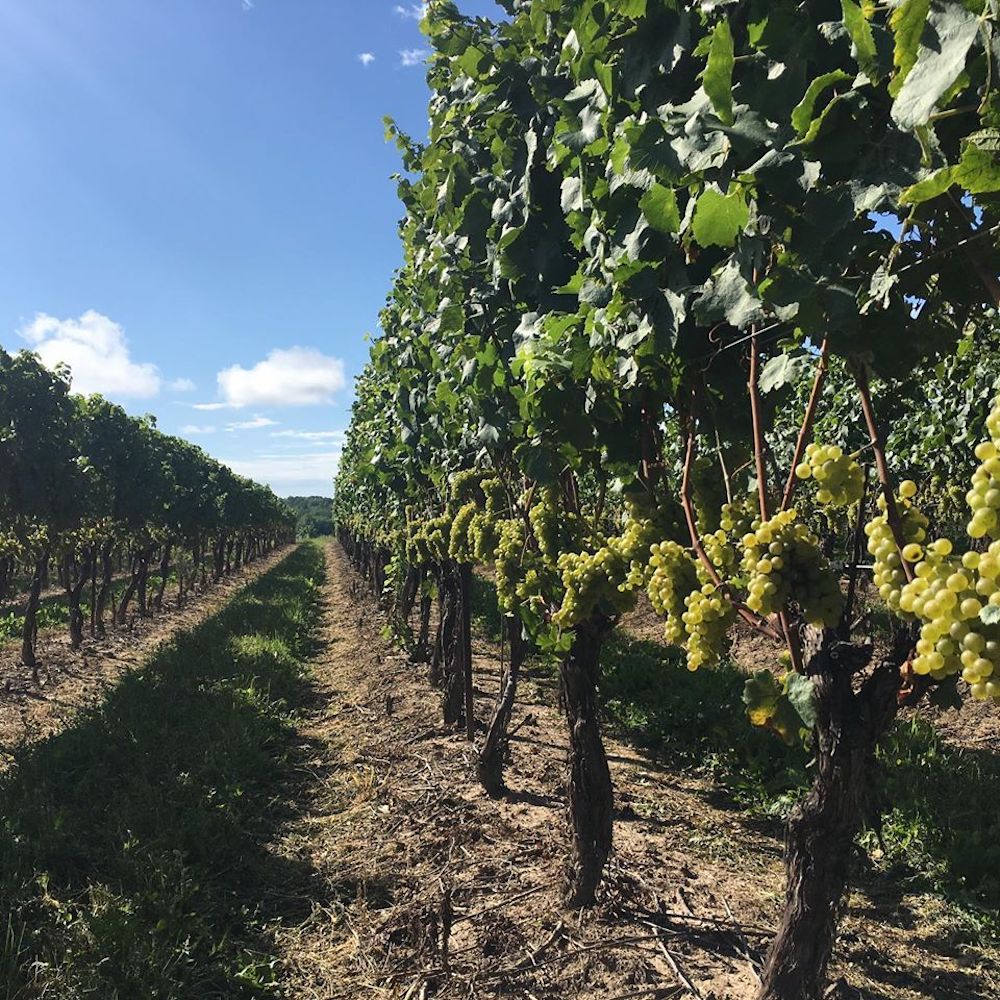
Reds all have some good Niagara acidity, so we had to be careful not to make monsters by extracting too much tannin as well. Sauv Blanc has wonderful aromatics and structure. Pinots and Chards are great also. We have some of the best Merlot I’ve ever seen – ripe fruit flavour. Syrah came through also, very elegant, northern Rhone style.
Definitely a lighter year for cabs – Franc will be in the Loire style for sure.
Brian Schmidt, Winemaker
Vineland Estates Winery
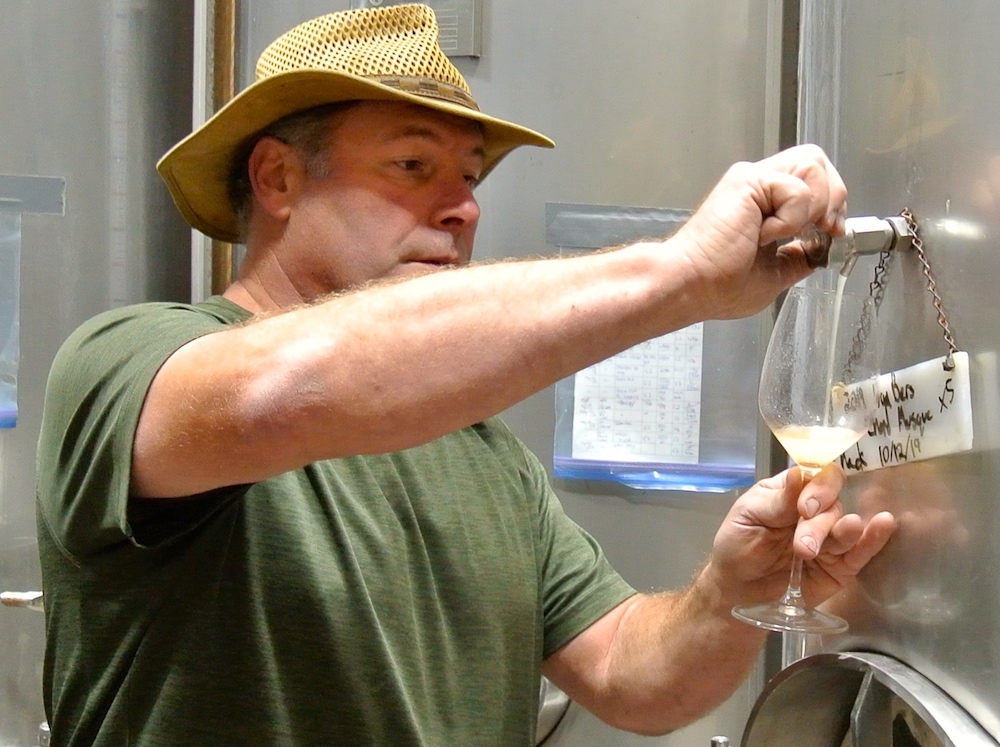
This coming 2020 vintage will mark my 30th vintage at Vineland Estates Winery. How and why is that relevant to the topic of the 2019 Vintage report you ask? It’s simple …
If you’ve ever thought you had “seen it all” in 30 years, you’d be wrong … Dead Wrong!!
Cool springs happen. In fact, I mostly welcome them. A cooler spring means later bud break. This is an advantage as we have seen more risk of spring bud killing frost in recent years. So, later is OK. But 2019. Said: “Hold my beer.”
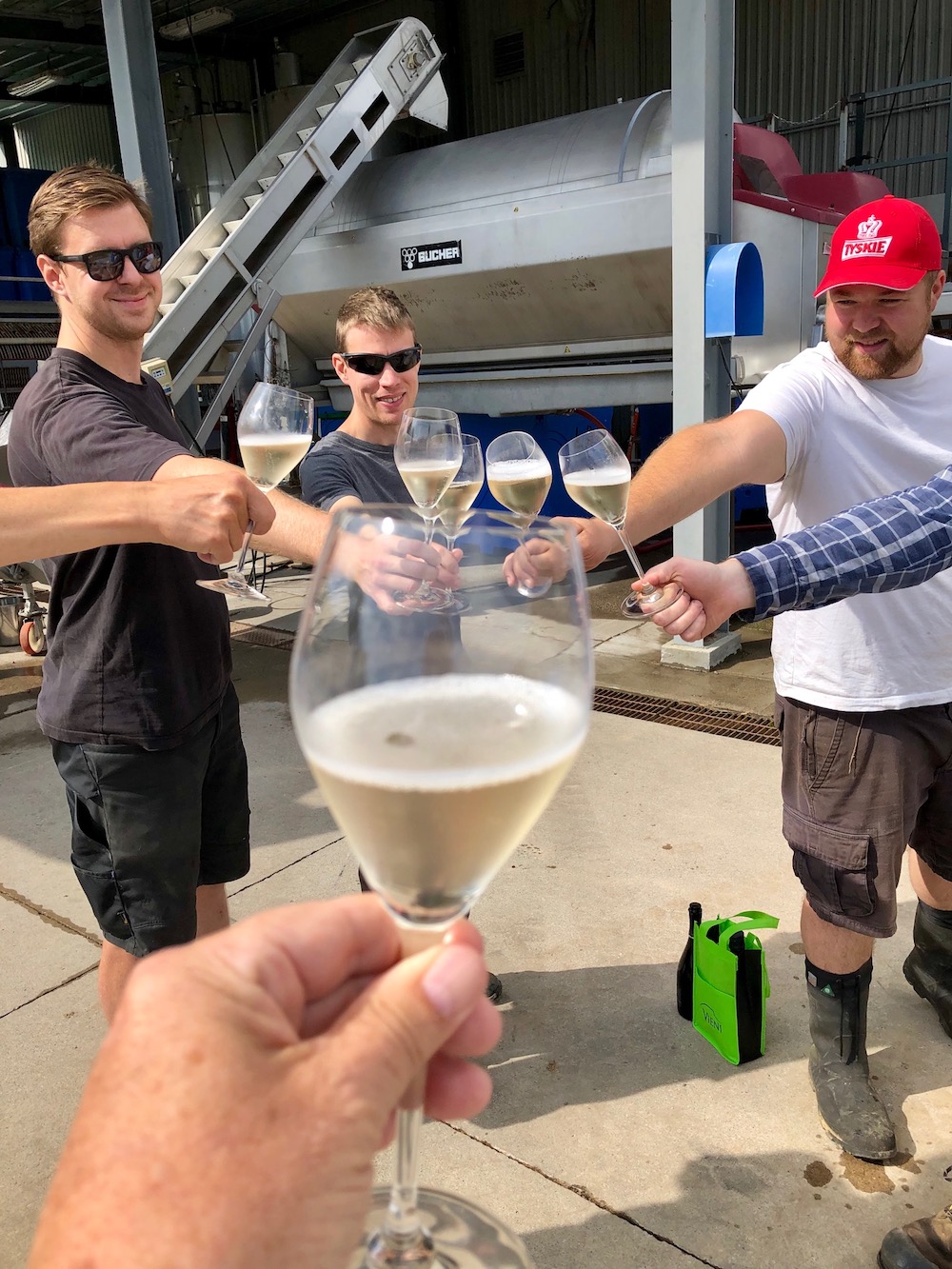
Bud break on our bench vineyards was severely delayed. Leapfrogging from winter to summer, counting forward the number of days until harvest was a daily ritual; continually making adjustments for cool rainy days that did not add to our slowly accumulating heat units. Adding to the growing anxiety of the 2019 vintage; mildew would take advantage of the cool, wet conditions and we were managing a complicated spray schedule to ensure the fruit would remain healthy and clean. We were mostly spraying hydrogen peroxide, a very effective and sustainable product that would kill mildew on contact but requires a greater frequency. Spraying in between rainy days in muddy conditions every 5-7 days is a very resource intensive process.
By mid-August it was clear that heat units collected were trending very low and that harvest would be very delayed. I began to count again. This time backwards from what we could consider the latest possible first frost day — Nov. 15.
We calculated our expected tonnage, our daily processing rate and determined we would need to begin harvest Sept. 25 if we were to have our all our fruit in by Nov 15.
The month of September was a godsend. We finally enjoyed a late summer and heat units accumulated, the vines enjoyed every moment the sun would shine on them.
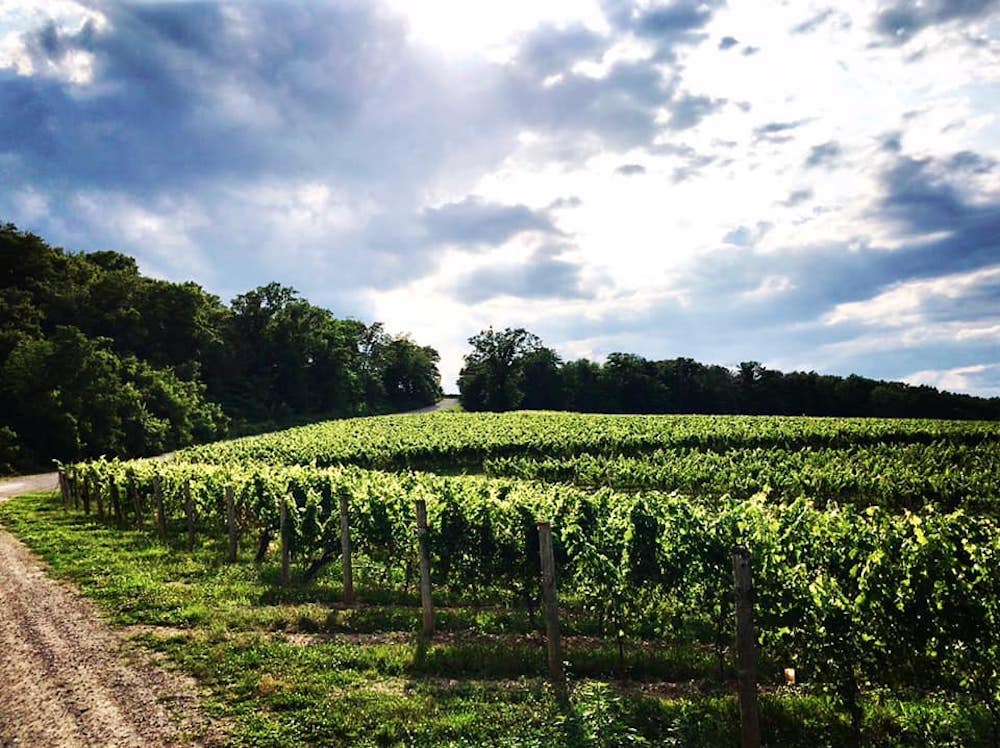
Chardonnay Musque was the first to come in — beautiful hand harvested bunches whole cluster pressed gave us a clear indication that whites from 2019 would be stunning. They did not disappoint. What about reds?
The sun continued to shine and the vines responded. Sugar was accumulating, and we could breath again.
At Vineland Estates we deployed every piece of game changing technology at our fingertips to ensure we would express the potential quality the vines delivered.
Nov. 15 was indeed our last day of harvest. The temperature dropped below 0 C and the Cab Sauv vines gave up the last of their fruit. The reds from 2019 show bright elegant berry fruit aromas, balanced texture and weight. I am impressed.
So, we end where we began, looking back at the lessons learned; comparing previous vintages to the frenetic 2019.
In my 30 years I hadn’t seen one like this.
Ben Minaker, Rockway Vineyards
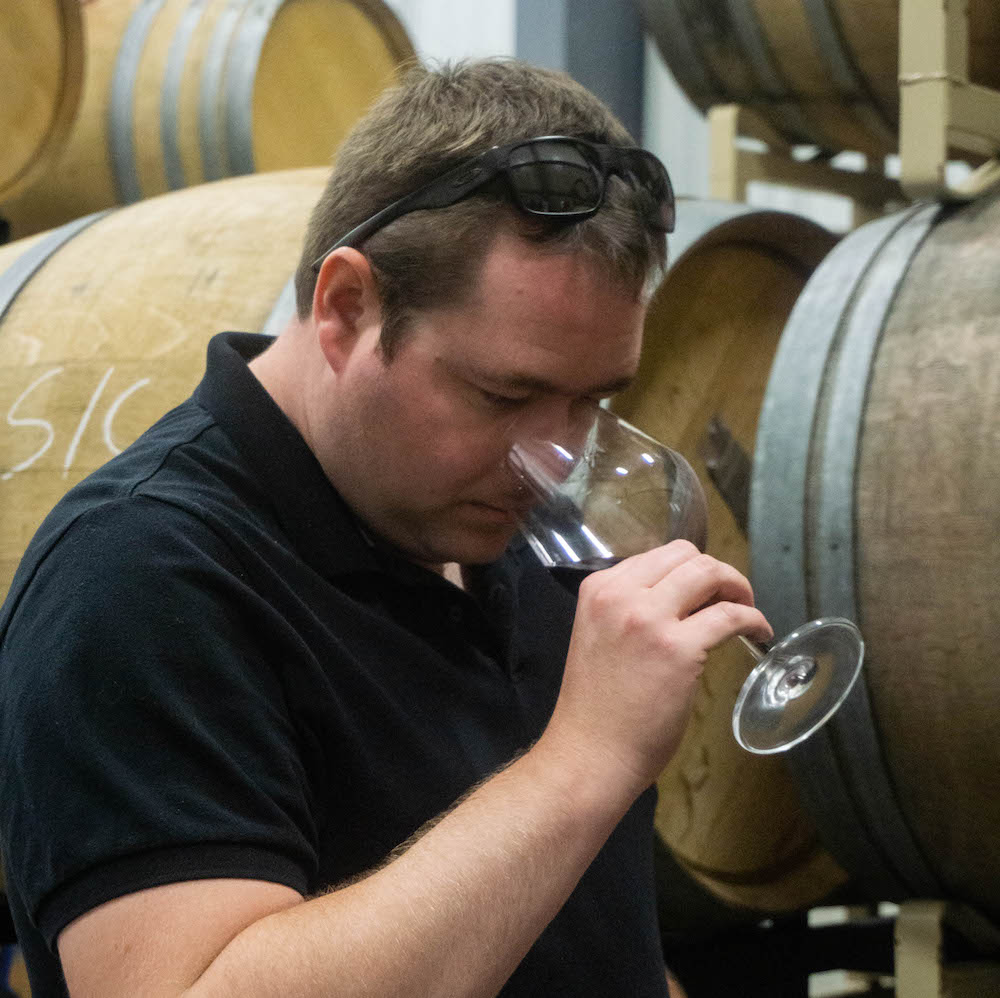
Spring 2019 was very long and wet. This delayed the start of the growing cycle thus pushing the end of it later than what was expected.
The weather during harvest was pretty favourable. There were ample sunny days to be able to pick when you wanted to. Based on the historical dates, it looks like all varieties were two weeks behind last
year and three weeks for some of the later ripening reds.
Wine quality is high if you had the ability to drop some crop. If you could reduce yields, ripening seemed to be fine (maybe a little skewed towards acid but not bad). I am very happy with Chardonnay, it has retained a very fresh acid structure. It has excellent intensity in the mouth it really does hold that acidic backbone that defines Chardo from the Twenty Mile Bench.
Pinot at Rockway is light on its feet but showing wonderful aromatics and texture, albeit lighter. Riesling hung for quite awhile to achieve a “normal” sugar level. This has brought out a fruitier side than what is typically seen from this vineyard.
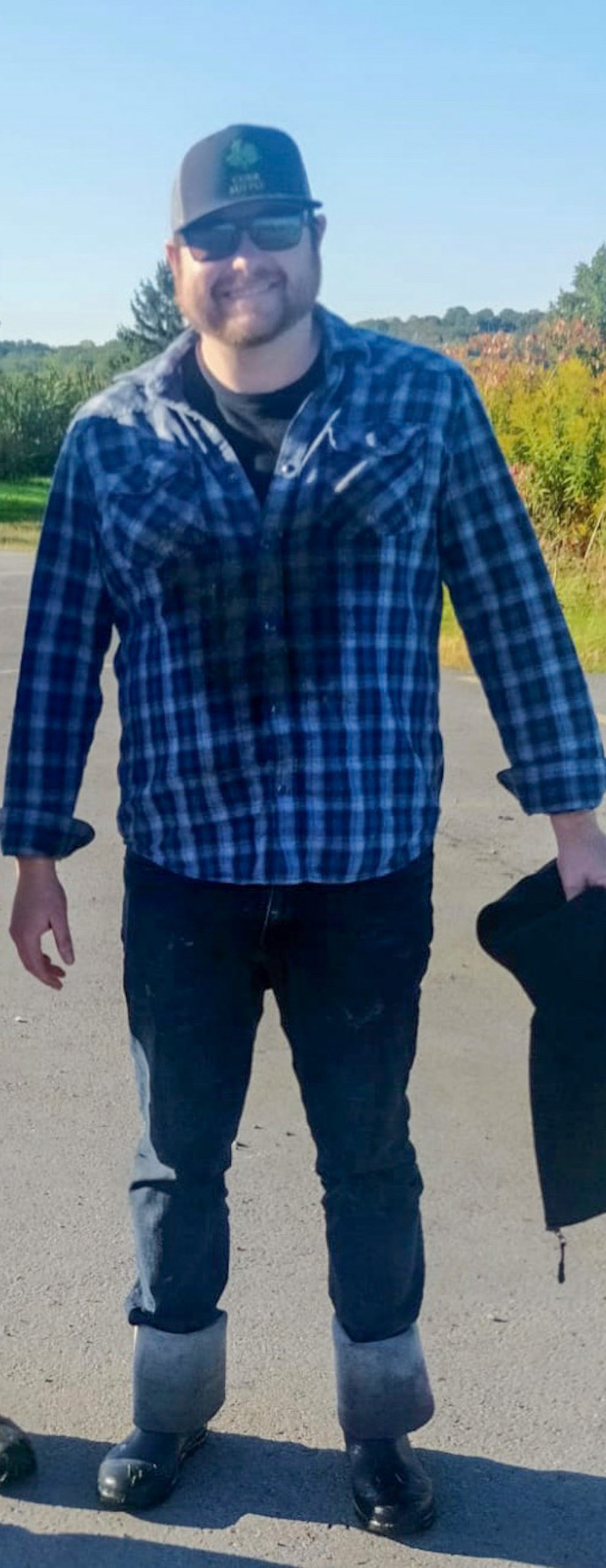
Syrah took a hit in the spring from a cold event, so yields were dramatically reduced. Again, it is on the lighter side but with some very pretty, floral aromatics. Cab Franc achieved great ripeness sugar wise but mostly in ripe aromas. We are not seeing really any green characters from the CF on our estate.
We did manage to get it off before the “great” snowfall of 2019. I believe this had to do with less crop on the vines so it was able to sugar up relatively early.
Overall I am pleased with the 2019 vintage and think you will see some very age worthy wines that come from it. It was another roller coaster growing season, which seems to be becoming the norm. This speaks volumes about our Earth and the shifts happening on it. We really haven’t seen something that I would consider typical since 2015. I think the time for the Tesla Cybertruck is now.
Arterra Canada
It was a late start to the growing season due to below normal temperatures in April, delaying vine growth. Summer was not too hot and precipitation fell at the right times resulting in an excellent growing season for grapevines.
Normal crop load developed in most varieties. The delayed growing season continued into September. First pick was Sept. 6 2019 – Baco Noir. Expectations for quality are very good with an average yield. harvest was completed by mid-late November
Craig Wismer, president Glen Elgin
Vineyard Management
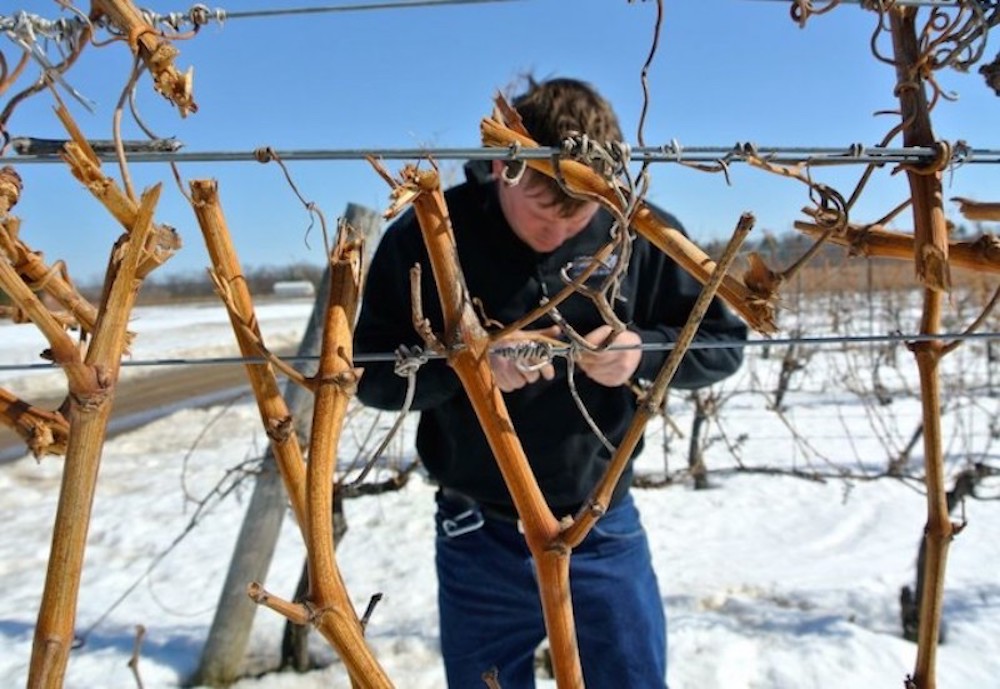
2019 will certainly be a vintage to remember; and for a couple of different reasons. The season started off with a cool wet spring, a prolonged bud break made for a slow start. Much of the season to follow was of a similar theme. Cool and wet, making for difficult vineyard conditions, and at times, tough to access even the most reliable sites!
New development and plantings were delayed, and everything was well behind schedule. July rolled around offering some relief. Hot and dry for about a month, and then the rains started in again. This weather carried on through into most of harvest.
As always, good viticulture practices shone through. At GEVM, we are big proponents of value added service. The lowest cost vineyard solution never holds true in the long run. Corners cut in the short term, result in additional expenditure in the long term. Having a dynamic vineyard plan, and being ready to adapt is key to making the most of Niagara’s unique weather and climate. Good vineyard practices; a solid fungicide program, quality soil management and effective canopy management all provide key elements to a successful vineyard; whether it’s airflow, sun exposure or drainage — all were tested in 2019. Any one of these factors can be the difference between making the most of a season like 2019 — or risking low quality fruit, and even potential complete crop failure.
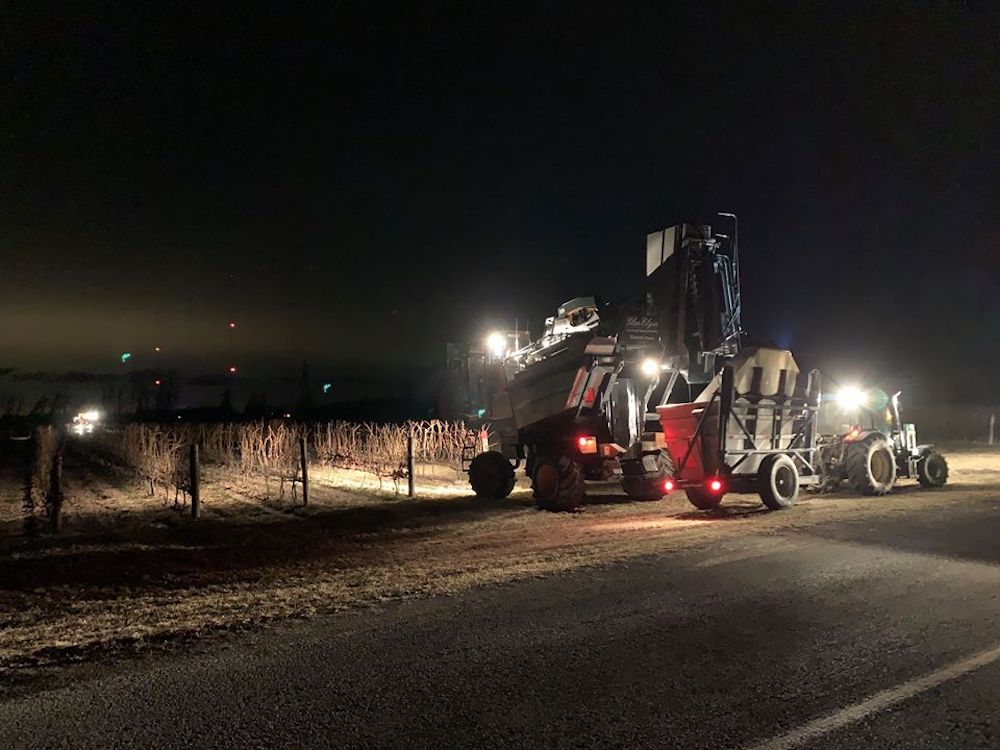
Harvest was a nerve wracking, nail-biting rollercoaster. We started late, even the earliest sparkling wines were well behind schedule. This meant we finished even later! The longest hanging Cabernet Sauvignon and Petit Verdot were late into November and even December! Despite the delays, the fruit was hanging incredibly well. Pinot Noir and Chardonnay pushed well into October, away from September’s warm, humid nights. The anxiety of a late harvest turned into an incredible appreciation for what it provided — amazing, long, cool hang-time. This may be one of the most important factors of the 2019 harvest. Incredible extended hang-time, that by all reports is translating into wonderful, complexities in the 2019 wines (even at this early stage.) Aromatic, focused whites and elegant reds to be enjoyed in time.
Finally, as if we hadn’t seen a long enough season in 2019, Mother Nature prolonged a very busy Icewine harvest well into January. Seven nights of custom harvesting later and we were finally finished on Jan. 21. All said and done, the book is finally closed on the year that just wouldn’t quit!
Barclay Robinson,
winemaker Foreign Affair
(Note: Robinson has accepted the winemaking job at Road 13 in B.C. and will be heading west in April)
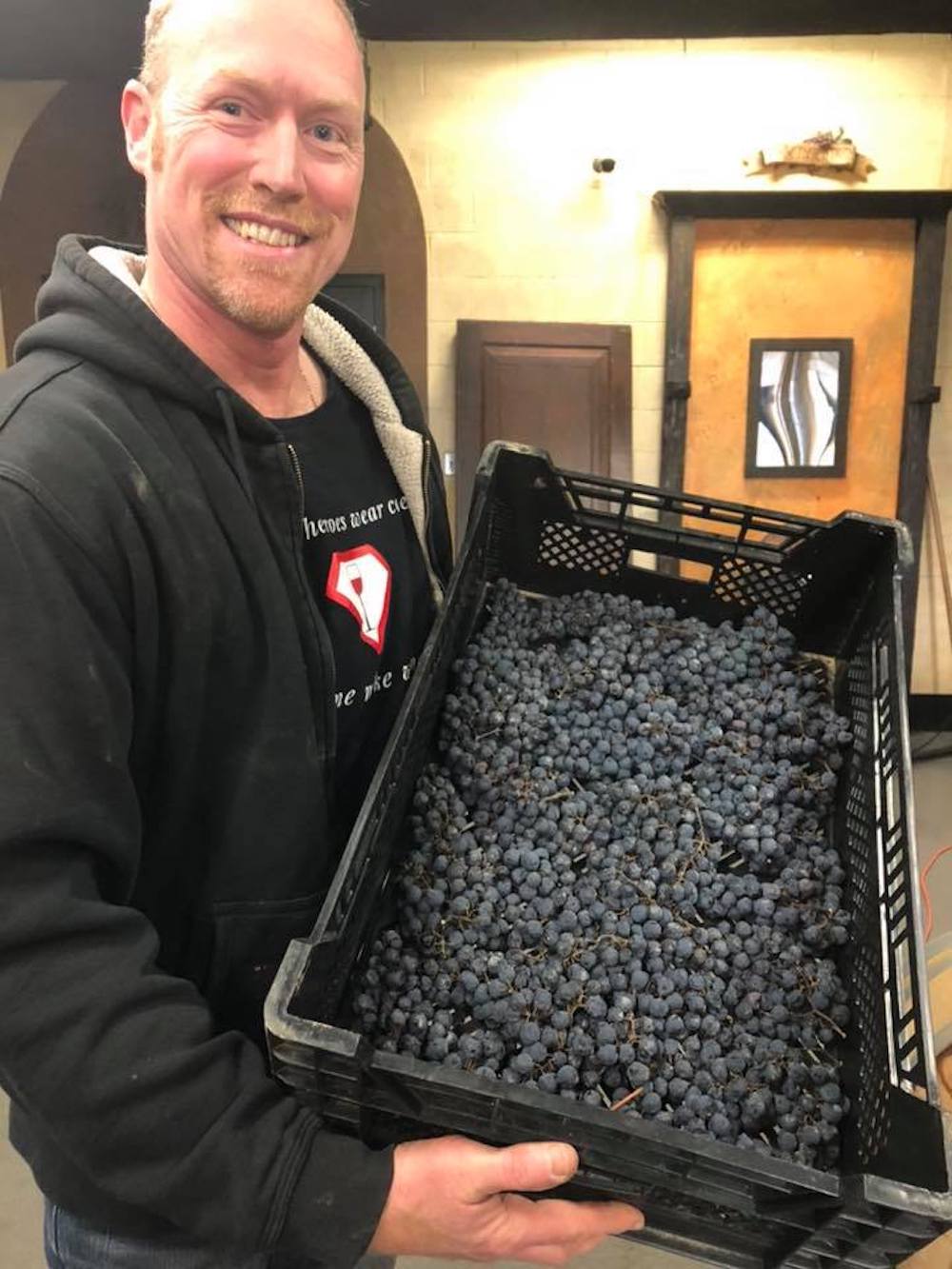
2019 was a vintage with many challenges, to say the least, but also many silver linings. The year began with low winter temperatures that had some impact on tender varieties like Merlot in one block of our vineyards. Bud break was later than average, but this also kept the buds in dormancy (and protected) from early spring frost risk.
The growing season was warm but also wet and humid so extra steps, and investment, were made to ensure a healthy, ripe crop of fruit. We had more canopy applications to combat fungus and mildew pressure throughout the season; did more fruit-thinning (especially in our Bordeaux red varieties) to ensure more ripening; did much more leaf removal to open up the fruit zone for more sun exposure and airflow during the ripening season.
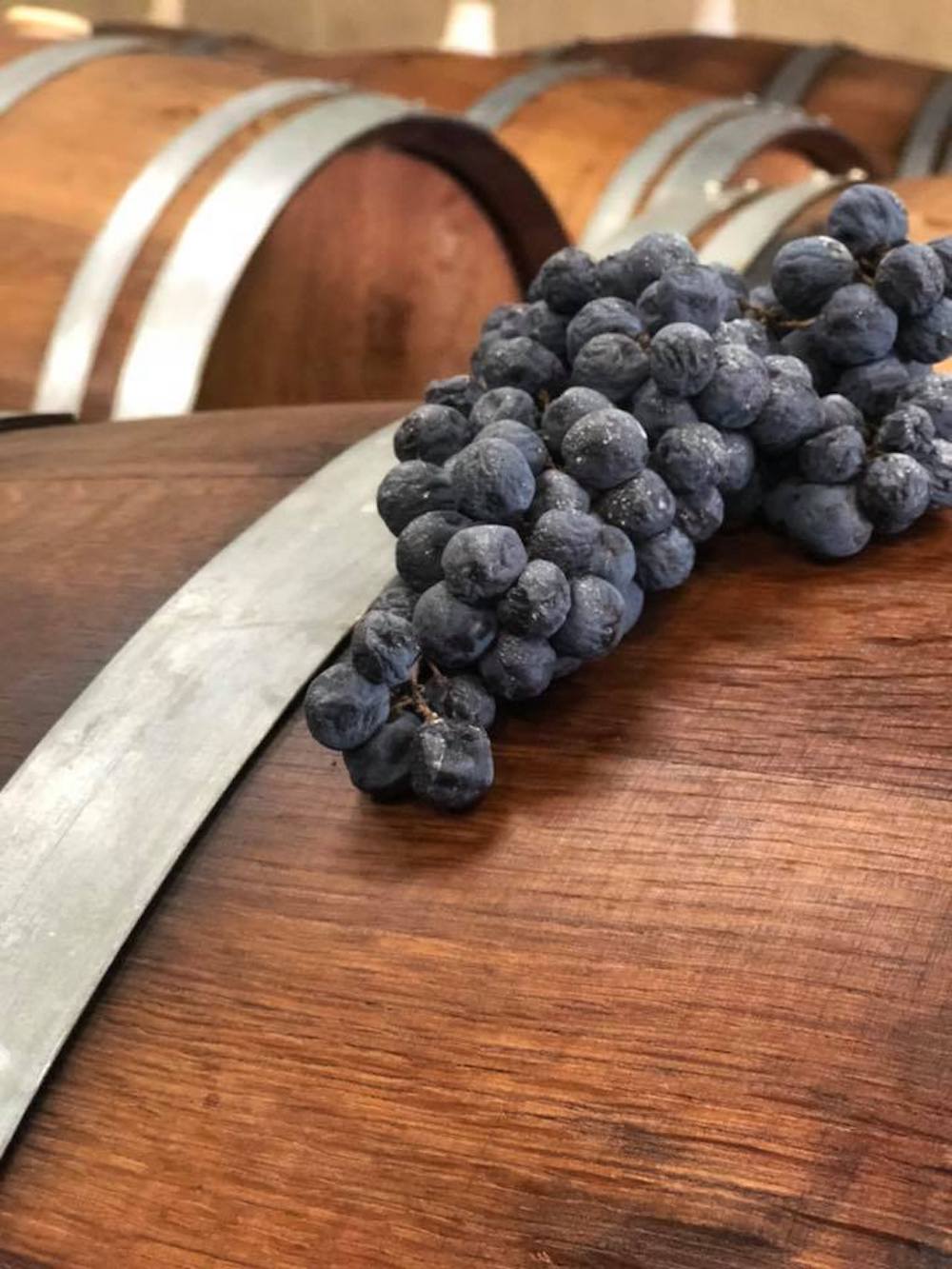
Harvest was wet and later than usual making harvest planning/timing challenging. However, we also did not see any MALB (Multicoloured Asian Lady Beetle) throughout the entire harvest season. Fruit quality across our entire portfolio was very good due to the extra attention to detail in the vineyards throughout the season and during harvest. While there were some industry concerns early in the harvest about high TA in some grape samples, I found that this concern did not pose a problem during fermentation or afterward.
I have noticed that our whites are showing wonderful complexity of flavour balanced with the acidity; earlier season reds like Pinot Noir and Gamay, although picked later than usual had fruit/skins that were in great health and had fantastic flavours and colour development; our Bordeaux red varieties all reached full ripeness very late in the season (the silver lining here was that the skins were in perfect health even after the first couple frosts/freezes and developed beautiful flavours for those that were patient with their harvest timing) but all are showing great flavour and very dark, stable colour in barrel. And finally, our appassimento reds (we just pressed our last reds Feb. 19 by the way) are showing exceptional depth of colour and complexity of flavours as they head to barrel for the next couple years.
Overall, I would say that 2019 was definitely a vintage that was made (or lost in some cases in the region) in the vineyard then refined and completed in the cellar. Those that went that extra mile throughout the growing season reaped their rewards once their fruit was brought in. The consumer can expect some fantastic wines from the 2019 vintage from good producers.
Emma Garner, winemaker
Thirty Bench Wine Makers
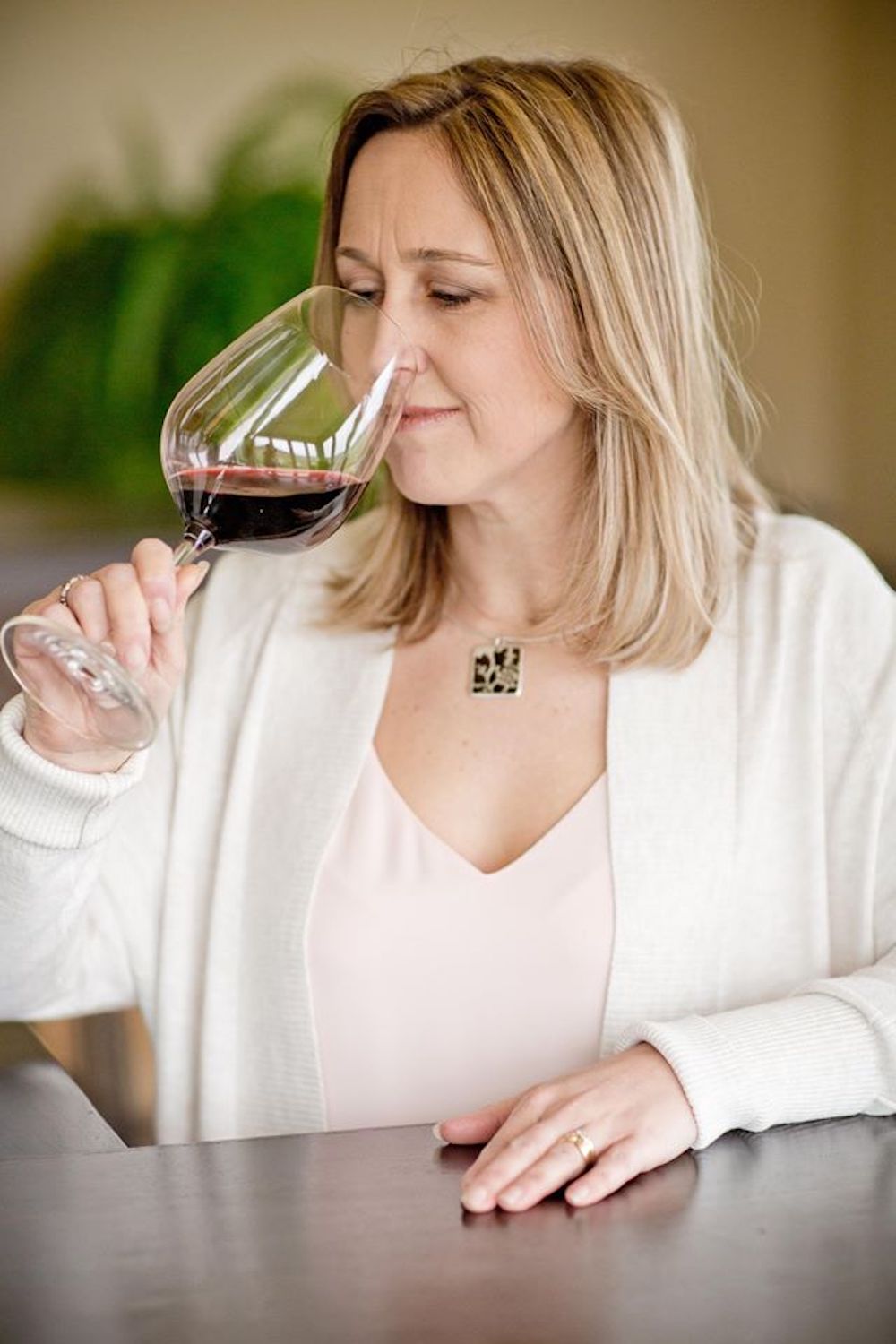
Here are some bullets from the 2019 vintage:
• Cooler growing season resulted in the delay of ripening for all varieties;
• Careful vineyard (and crop) management was required to promote ripening;
• A wet, cool fall increased this challenge resulting in further inputs in the vineyard (i.e. increased hand harvesting, alternate machine harvesting techniques (destemmers on harvesters, optical sorting on harvesters etc., etc.);
• A snowstorm in November forced us to stop harvesting and take a pause (that was a first for me this year!);
• Increased inputs in the winery – utilization of different technology and techniques (i.e. optical sorting to help compensate for uneven berry ripeness and MOG, with the later picks, flash détente trial to decrease pyrazines in less ripe blocks, floatation to help improve winery throughput and quicker inoculations etc.);
• All of this sums up to a challenging vintage in both the vineyard and winery! A year that a winemaker earns their stripes (or keeps the ones they earned last year).
How did this impact the finished wines?
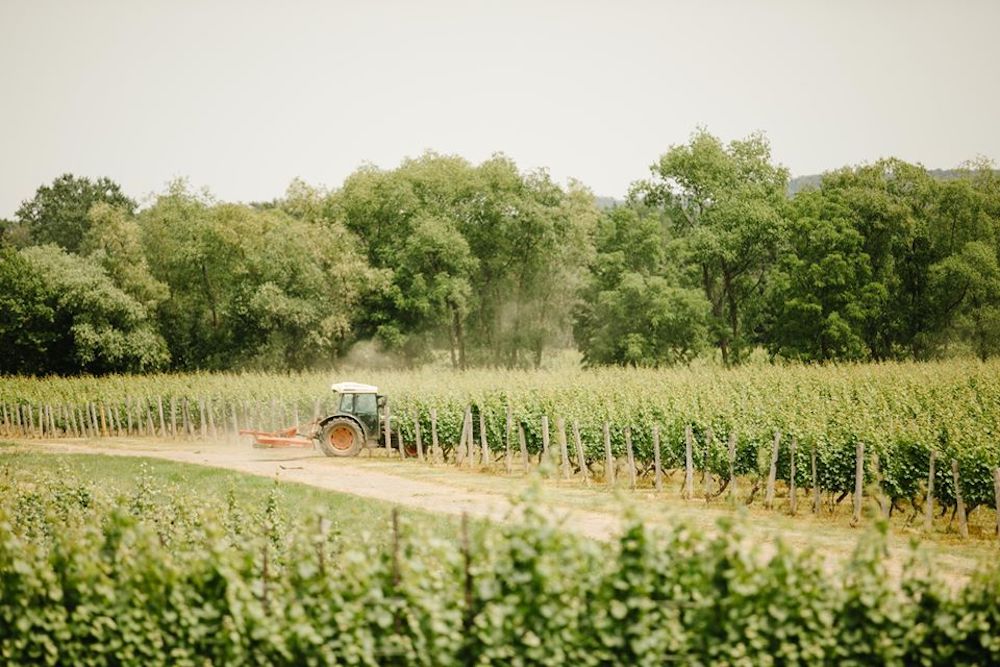
All of this effort has certainly paid off.
We have completed blending sessions for aromatics, sparkling and roses and the quality is amazing. The wines are delicate and focused, which I believe will transpose to great age ability as well as early accessibility to some varietals.
Chardonnays have developed and fleshed out in the mid palate;
Pinot/Gamay – both light and delicate, more in the floral and primary realm rather than big and beefy – very pretty wines;
Bordeaux varieties – slightly higher acids resulting in more vibrant colour and tannin structure. These wines will need more time to develop their character and personality;
Not a big blockbuster year for reds, however, as we have seen in the past, these wines are sleepers and will prove to age well and offer a vibrancy later in their lives that we don’t typically see in really hot vintages.
Kelly Mason, winemaker and
grape grower Domaine Queylus,
Honsberger Estate Winery,
The Farm, Mason Vineyard
Mud, Acid and Why I Should Have Married a Speck Brother …
The 2019 season was off to a slow start with a muddy wet spring that slowed down tractor work in vineyards (working the soil, composting etc.). We caught up over the summer months of June and July, but August was a tough month – some cold spells, hail, and growing degree days in the 980s (instead of 1,020+).
Fruit maturation slowed down in August, thereby pushing out the pick dates for the earlier ripening varietals. Pinot and Chard did not start to come in until the last couple of days in September. This longer hang-time gave us decent sugars, but acid degradation in berries was slow, so fruit came in with high acid. It was a mad rush to try and capture the best picking windows for Pinot Noir and Chardonnay at optimal ripeness while dealing with tank logistics, manpower, equipment constraints, and weather/picking schedules.
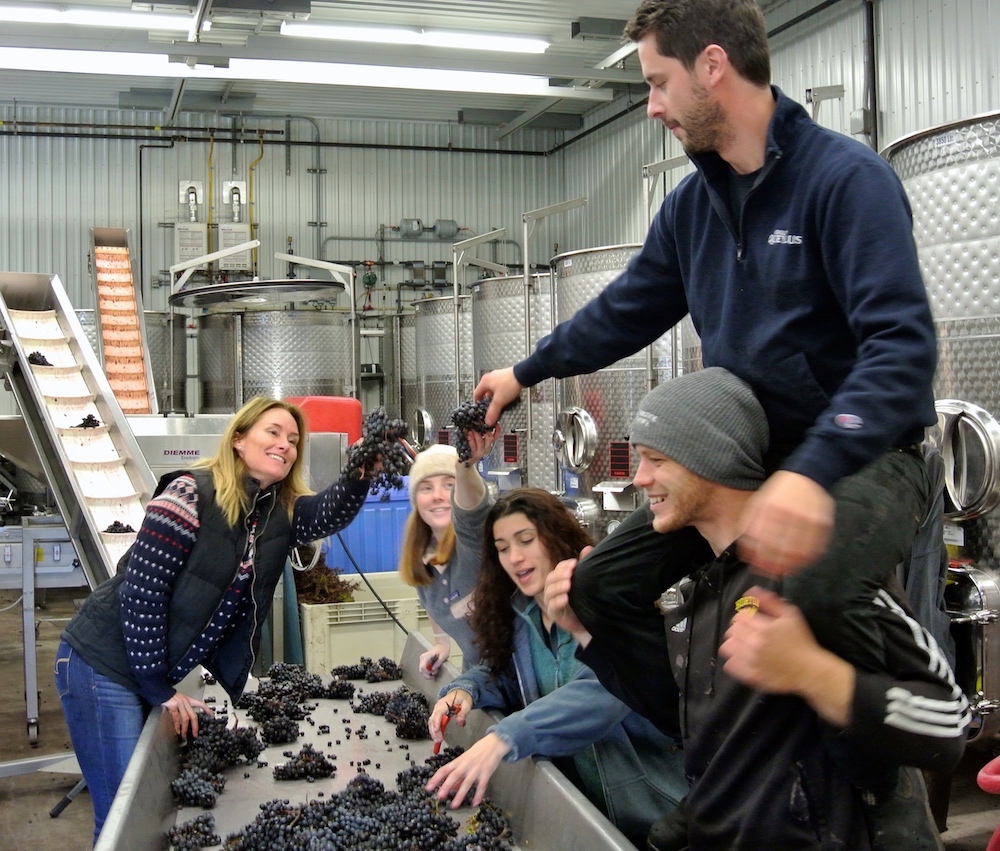
Once we started picking, we moved fast, block by block, so that the last blocks were not too ripe or hanging during any bad weather. Chardonnay came in heavy – Brooke Husband (lead cellar hand) and I have Chardonnay PTSD. For over 15 days, our production schedule consisted of packing the press with Chardonnay in the morning, then turning around to process Pinot in the afternoon, then back to Chardonnay at night. Merlot came in right away at 23 brix, flirty and thriving. The harvest team was fantastic at hustling this all through and we had some sleep-deprived fun along the way. I have a new appreciation for Henry of Pelham’s 30-tonne press. We could have processed our entire 2019 vintage of whole cluster Chardonnay in 1 day if I had that press and my last name was Speck.
Cabernet Franc came in beautiful, ripe and on time. You know why this sentence is short? Cause it’s about Cab Franc. Not Pinot.
After a three-month harvest of intense decision-making and constant physical stress on the body, we used the Christmas holiday to forget the pain of harvest – we have to forget it all in order to want to do it again in nine months.
Ilya Senchuk, winermaker/owner
Leaning Post Wines
(and winemaker at the Good Earth)
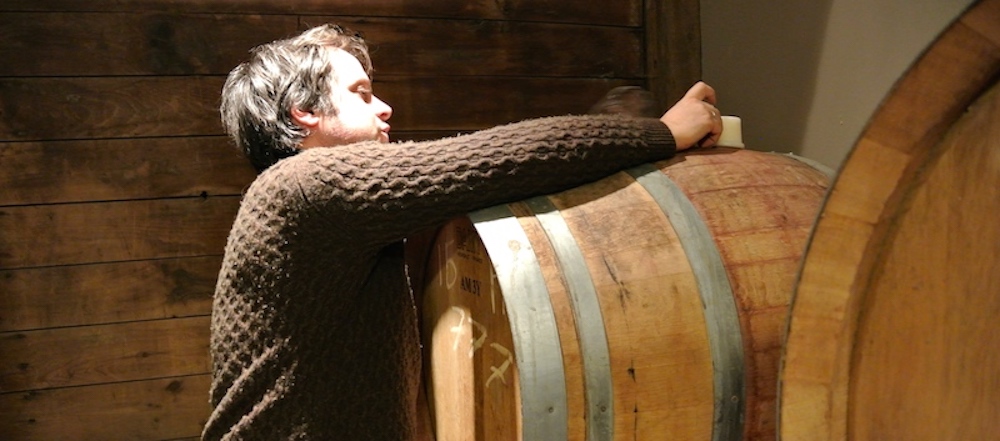
The 2019 harvest got off to a late start because of the late/cool spring and moderate summer and fall we had. For early varieties like Chardonnay and Pinot Noir it was a pretty amazing vintage actually.
Acidity and sugar for sparkling wines was textbook. And for still wines, with high acidities and cool weather, it allowed us to hang Chardonnay and Pinot Noir well into October. Our last Pinot Noir pick was Oct. 15, and our last Chardonnay was Oct. 18. The flavour development and intensity with moderate alcohol and high acidity, particularly on Pinot Noirs I have not seen for a very long time.
Though, in some ways, similar to both 2017 and 2014, I actually am so far finding that Pinot Noir and Chardonnay remind me most of 2009, which, in my opinion, is still one of the best PN/CH vintages.
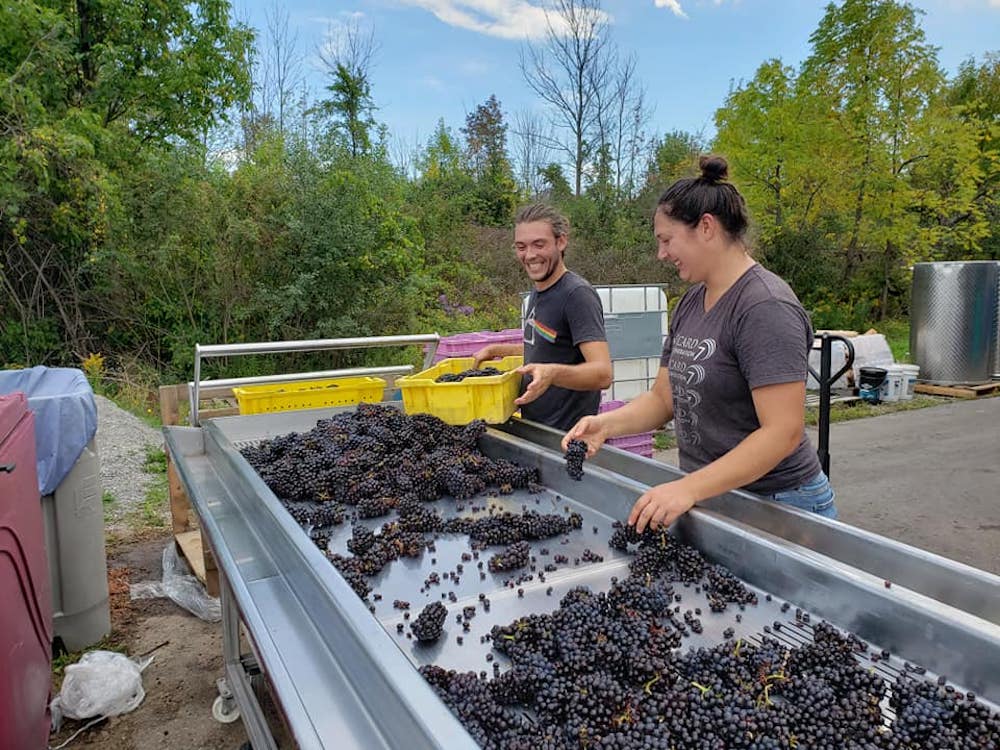
In terms of other grape varieties, Sauvignon Blanc was very good and no doubt prefers this sort of weather. Perhaps the most interesting contrast this year was between Gamay and Merlot. Somehow the season pushed Gamay into very late picking (our last pick was Nov. 6) with similar feel of intensity and acidity to Pinot Noir. However, our Merlot vineyards seemed to ripen as though the season was not cool and late at all! We finished Merlot before we finished Gamay and all our Merlot vineyards were very ripe! The wines are focused and full-bodied with massive tannins. These wines will take a while in barrel before they are ready, but are really impressive.
Cabernet Franc was perhaps the most challenging this year, since we had an abrupt cold-event in the second week of November. We were able to pick some CF before the freeze, but some had to wait until after. I think CF this year will probably be the most mixed in terms of quality, although we made winemaking decisions (i.e. rosé for less ripe blocks) that has helped.
Overall, I honestly believe 2019 might be one of the best vintages for Leaning Post (and potentially Good Earth) we have ever had! We are primarily a Chardonnay/Pinot/Gamay producer, and I believe these might be the best I have made in 10 years.
Prince Edward County
Mackenzie Brisbois,
winemaker Trail Estate
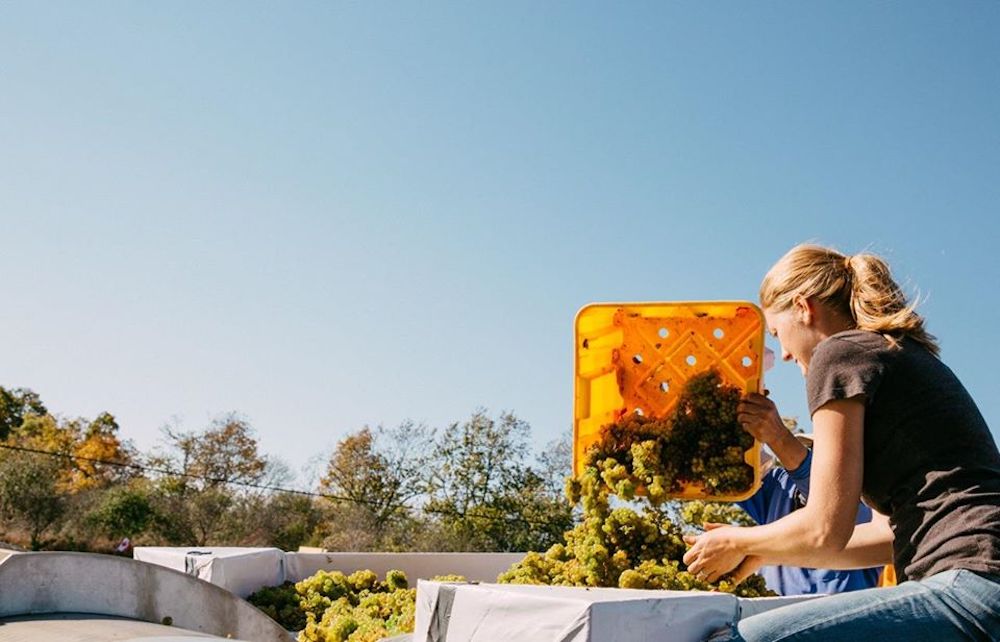
The 2019 growing season was another hot and dry year. In Prince Edward County, our plants showed signs of drought throughout August. The berry sizes and cluster sizes were very small, anywhere from 25-50% smaller than 2018. The wines show huge amounts of concentration with reds having plenty of colour.
Unlike other years, varieties were slower to ripen meaning harvest picks could be carefully calculated and conducted with more time than normal (in other years everything has been ready at the same time)!
By Chadsey’s Cairns
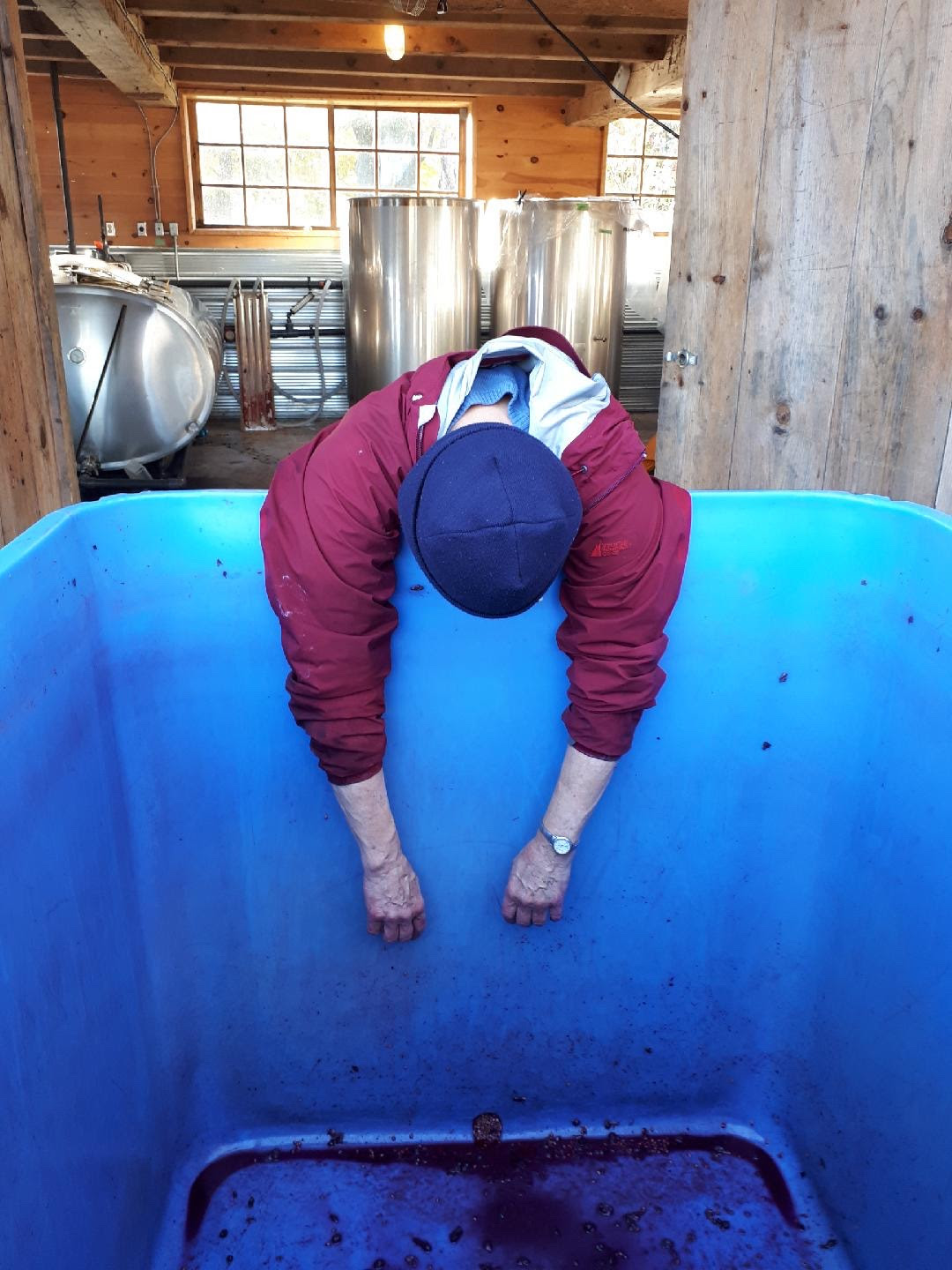
Winemaker Vida Zalnieriunas pressed out the last of the Gamays before the cold snap hit and that officially concluded our 2019 Harvest.
This year, we cut back by two-thirds the number of vines we were tending for harvest, retaining only the King Eddy vineyard, while Broken Stone took care of Apple House and Velo reverted to its owners Kate and Douglas after 16 years of our stewardship.
Although it lowered our workload and expenses as planned, we ended up with our largest harvests of Pinot Noir and Chenin Blanc ever. Not only that but we dropped over a tonne of fruit from our Gamay for fear it would never ripen, culling it twice, and still ended up with about 3 tonnes per acre. We only have 200 plants of Muscat in the King Eddy Vineyard (it was our experimental block before planting in Velo in 2003). However, it produced enough gorgeously aromatic juice to allow Vida to commit to making only our second Rubenesque Rose. Finally, with only slightly less than an acre of Chardonnay in King Eddy, Vida is still determining whether to keep one special barrel or to have it all support our 2019 Roxey. We have lots of 2016, ’17 and ’18 Chardonnay left to sell but they were each such lovely vintages that she is tempted to set one barrel aside.
The sugars all hit VQA Prince Edward County levels, although we will also be making at least one sparking red this year which has to be labeled VQA Ontario, even though it will be 100% estate grapes from King Eddy.
As a result of this larger than anticipated harvest we expect to be offering a very significant quantity of red wine of Vintage 2019 in the tasting room after bottling in the spring.
Other Ontario regions
Shauna White, winemaker
Adamo Estate Winery
(Hockley Valley)
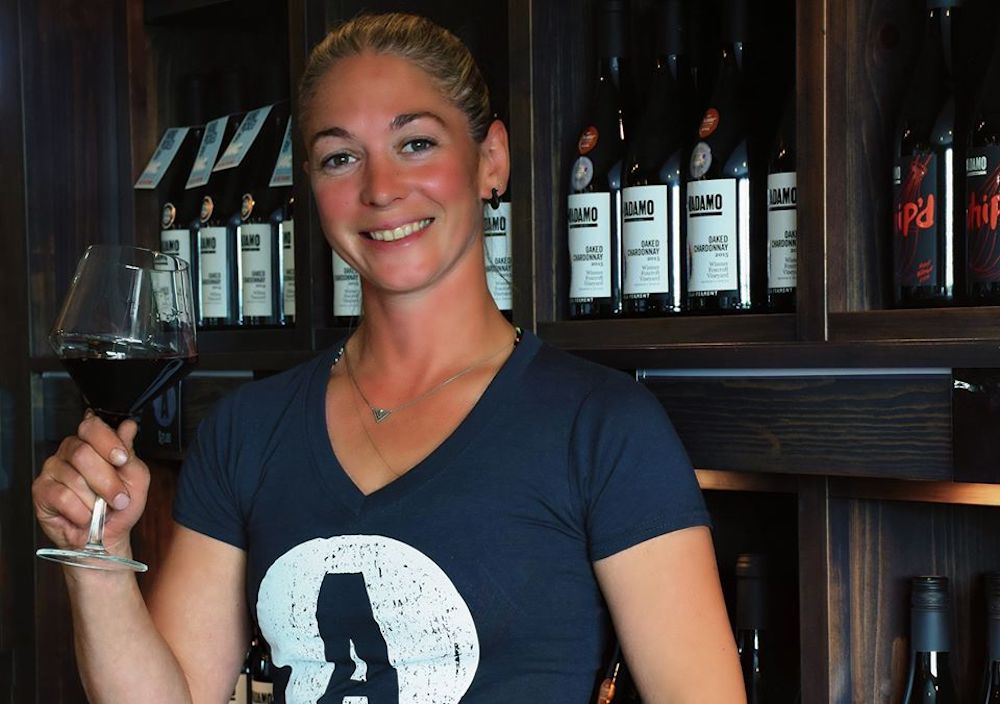
2019 was an exciting vintage but not without its challenges. Up in Mono we started the year off with a cool, wet spring and a delayed bud break. The delayed bud break was beneficial for eluding the frosts that we get here annually but it also meant a later start to the growing season. The weather started warming in June and summer finally arrived in mid-July, but we did not see the extreme high temperatures as we have in other years.
Our vine canopy was extremely healthy and happy throughout this growing season with a low disease pressure here in Mono. The cool nights came in the beginning of September and stayed for the remainder of the growing season, which helped to maintain and capture acidity for traditional cool climate structure and flavours in the grapes and now the wines.
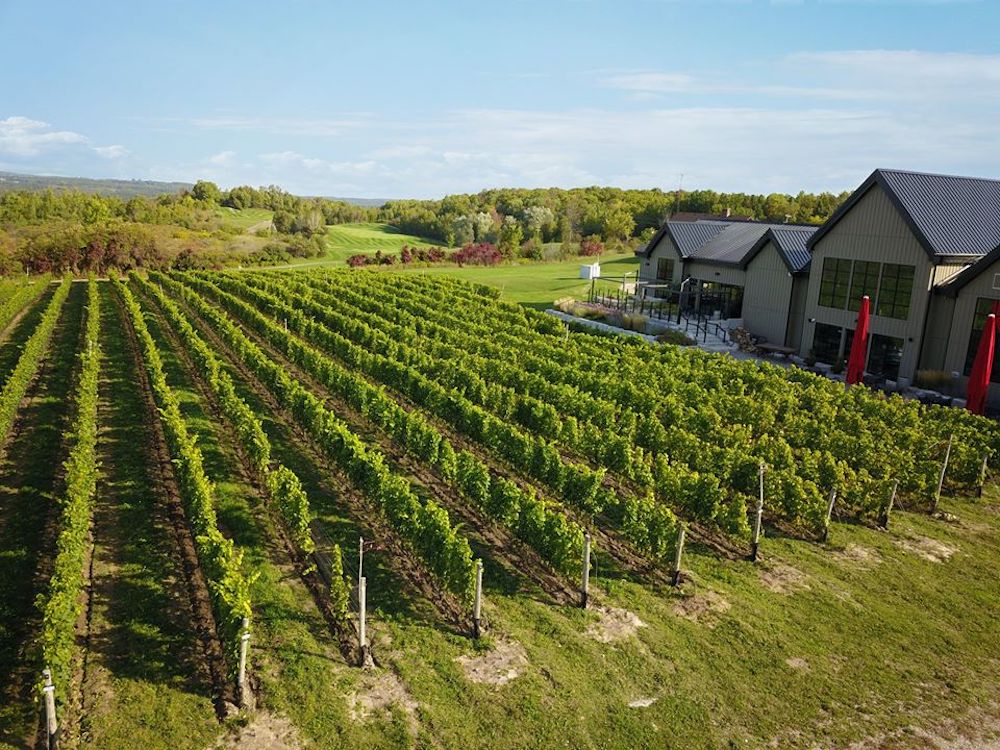
The cool fall weather seemed to arrive earlier this vintage which allowed for longer hang times without the threat of the grapes breaking down due to botrytis or sour rot. By being able to let some varieties hang for an extended time, the flavours and berry ripeness could develop and a preferred picking date could be executed. Winter came quickly and the ability to harvest icewine at an early cold-snap was taken advantage of by many.
The early onset of winter temperature made blanketing our vines a bit of a challenge. For us, it was a race against the clock to get the vines pruned, tied and our blankets laid down before the ground went into a deep freeze for the winter. We achieved this goal for 2/3 of our 18 acres and then the snow came. Lucky for us, we were able to get the remaining 1/3 of the vineyard blanketed. We then had a thaw to allow for the movement of soil over the blanket edges, to seal them up for our winter protection and from the cold conditions ahead.
The 2019 vintage looks to be fantastic for most varieties showcasing crisp, fresh acidity in the whites and a balanced acid backbone for the reds. The aromas and structure of the wines reflect cool climate in a most traditional way with low pH’s and tightly focused palates that can allow for better aging in bottle.
We are very excited about our first harvest of Estate grown, Gamay Noir Rosé at Adamo. However the Pinot Noir, Chardonnay and Riesling, produced from our 6-year and 7-year-old vines, are stunning wines for this 2019 vintage. All in all, we love the 2019 vintage wines here in Mono!
Brian Hamilton, winemaker
KIN vineyards (Ottawa Valley)
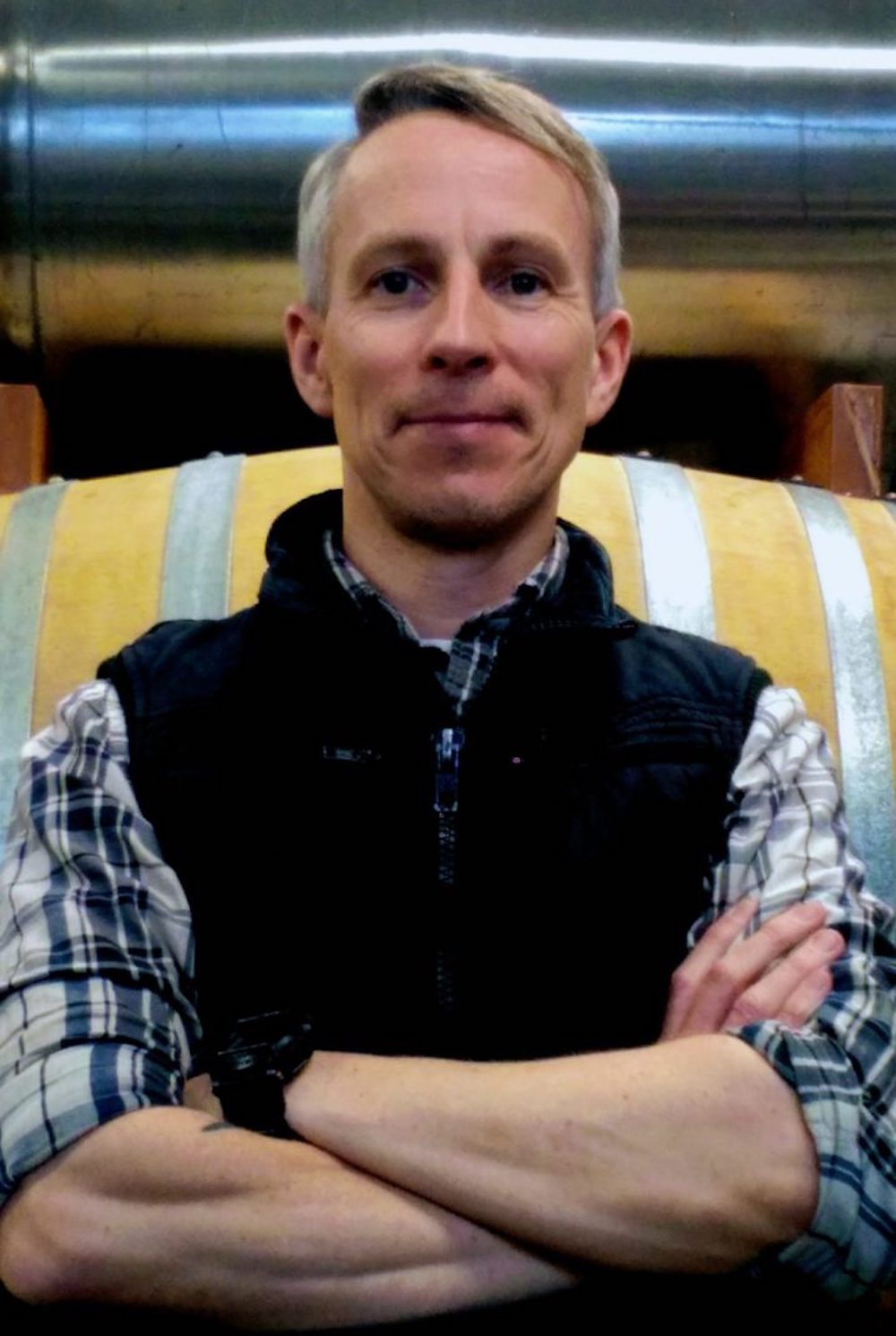
The vintage’s biggest challenge was the late spring, which saw us about two weeks behind a typical season. The advantage to the late start was a reduced concern for spring frost damage, though, as unburying had not yet been completed. As a result we avoided any need to use our wind machine or vineyard candles to protect against cold events.
We realized with the late spring that the growing season would be compressed and the harvest, in all likelihood, would also be later than usual. With the requirement to complete vine burial by mid November we could manage our pruning and crop load to achieve grape ripeness within these parameters.
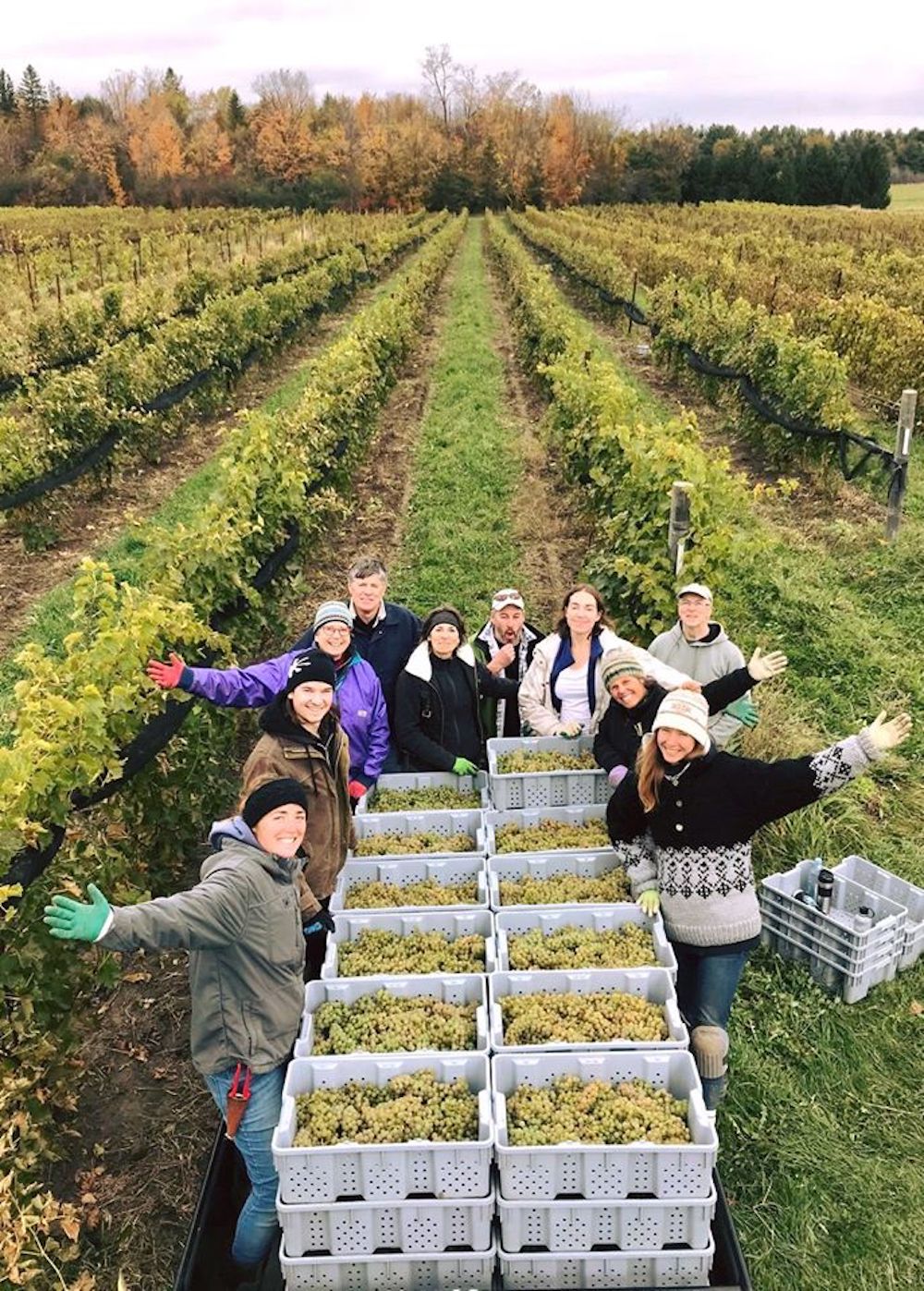
Flowering completed over a two-week time frame with little rain and uniform fruit set. The season saw ample sunshine and warmth as well as adequate rainfall to avoid any drought issues even in our more sandy areas of the vineyard.
Disease pressure was manageable and pest pressure minimal so later in the season saw perfect conditions with little mildew, good crop load (1 to 1.3 tons per acre) and little sorting required after careful hand picking.
Generally, the wines show an elevated acidity and freshness over typical years with pronounced florality /fruitiness in the whites and reds with a greater depth of colour, stability and structure. The Pinot Noir in particular is exceptional with far greater depth than the previous vintage.
Wines from 2019 will show dense fruit character, good structure and whites will have a slightly increased residual sweetness to balance the acidity.
Ontario Wine Vintage
Charts going back to 1998
We have been publishing this vintage chart for Ontario wine for the past 11 years on this website. It was originally commissioned by the long defunct Wine Access magazine and updated on an annual basis. We have attempted to keep it current and relevant.
New to the chart is a “tentative” rating for 2019, a more informed rating for the 2018 vintage and updates on all the other vintages (mainly in the drinking window) back to 1998.
As with any rating system, the score is less important than the description of the vintage. That is especially true when discussing a region such as Ontario where so many varieties of grapes are grown. What’s good for the Bordeaux varieties isn’t necessarily good for aromatic whites and early-ripening red grapes in any given vintage. It is rare that, in terms of wine quality, a year is a total failure or a total success in Ontario, unlike vintages in say, Burgundy or Bordeaux. Please keep that in mind when reading our assessments.
2019 ★★★★★★★ (7 out of 10, tentative)
You hear it a lot in Ontario — that was the wildest harvest ever! Well, in 2019, it truly was the craziest growing season in a very long time. A wet, cool spring put everything behind by about two weeks. Summer brought typical weather with normal temperatures across Ontario and the growing season got under way. Flowering occurred quickly as the grapevines accelerated their growing, but struggled to make up for the late start. July was warm and sunny, punctuated by intense heat waves and high humidity. August was warm and intermittently stormy, leading into a comparatively quiet September, cool with some rain – but bringing decent conditions to finish off the summer and begin the harvest season. Early-ripening grape varieties escaped the wild weather of late fall and especially an unusually early cold snap in mid-November. Yield reductions were common for many of the red varieties to ensure optimal ripeness, particularly for later maturing varieties. Harvest extended into early December, sometimes taking place in the snow. The first icewine grapes were picked on Nov. 12, well before a lot of the red Bordeaux varieties. White wines should prove to be the superstars of the vintage with crispness, ripe fruit and finesse. Early-ripening reds such as Pinot Noir will prove to be beautiful, built in the vein of the 2009s. The fuller-bodied reds will depend on the winery, winemaker and picking decisions (and, perhaps, technology). The verdict is still out. One thing is certain, there will be no lack of freshness in Ontario wines from 2019.
2018 ★★★★★★★½ (8 out of 10, tentative)
Having now tasted many of the 2018 reds and whites, I have upgraded the overall score on the vintage to 8 out 10 stars. These are wines with freshness, depth and complexity, generally speaking. It was an ideal summer; hot, dry and long, sunny days. Everything was ahead on the ripening front and it appeared to be another 2016 or 2012. But heavy rain and thundershowers mid-harvest turned the vintage on its ear and left many growers and winemakers with tough decisions to make in the vineyard (not to mention dog tired). In some cases it was a choice between saving one variety over another. The quality of the wines entirely depend on what decisions were made — not only in the vineyard but also in the winery. Most wines made with grapes harvested before the rains began are exceptional. Those wines made with grapes harvested after the rains began have to viewed through a different lens and assessed on a wine by wine basis. Winemakers feel the wines they have in barrels and many now bottled are of good quality. The wines are tasting better than I anticipated, though there are low yields in many varieties.
Whites: Drink or hold aromatic whites (can hold Rieslings 3+ years), drink or hold Chardonnay
Reds: Drink Gamays, hold Pinots, Bordeaux varietals.
2017 ★★★★★★★½ (7½ out of 10)
All summer long it looked grim for the 2017 grape harvest in Ontario with cool, wet weather and the odd hailstorm thrown in very good measure. Then Sept. 1 rolled around, bringing extended heat and sunshine for one of the nicest falls on record and one of the latest harvests on record. The extra hang time for the grapes provided some needed ripening (in some cases right into December) and turned a potentially disastrous vintage into a fairly good one. It was also a record harvest in terms of tonnes of grapes harvested. Early reports suggest excellent quality for aromatic white wines and good to excellent results for Pinot Noir, Gamay and Cabernet Franc. A few wineries declassified their top Bordeaux-varietal-based red grapes (so watch for the lower tiered reds to benefit from those grapes). As the whites and some reds are now being released, I have been impressed with the quality. It would appear Ontario fully recovered from the back-to-back winter-kill years of 2014-2015.
Whites: Drink aromatic whites (can hold Rieslings 3+ years), drink or hold Chardonnay
Reds: Drink Gamays, hold or drink Pinots, hold Bordeaux varietals.
2016 ★★★★★★★★★½ (9½/10)
Winter in 2016 was mild and drama-free for grape growers in Ontario. By mid-May, the vintage settled into a sustained pattern of much drier and slightly warmer than normal. Drought in some areas was a concern in some parts of Ontario.
The hot, dry conditions prevailed throughout August, with lots of sunshine and just enough rain to keep drought conditions from becoming too severe. Targeted irrigation was required to sustain the young vines planted to fill in sporadic damage from the cold 2014 and 2015 winters. Weather conditions were very similar in all appellations with the exception of a short but major rain event in Lake Erie North Shore in September. In all, the growing season presented outstanding opportunities for grape quality across Ontario.
Harvest was early in all regions for all varietals and was stress-free with dry conditions and limited disease pressures. It was the perfect recipe to provide an excellent vintage. Virtually all grape varieties performed well in 2016 and were picked in pristine condition. This is a year to buy and hold those bigger red wines (Bordeaux varietals, Syrah, etc.) that will age gracefully for 10 years or more. The Chardonnays are generally more robust than in cooler years and Pinot Noirs more complex. Rieslings will be riper and have immediate appeal. Across the board, this is a great vintage along the lines of 2012, 2010 and 2007 and a good bounce back from 2014-2015, even if the tonnage was not quite back to normal. You can buy most varietals and blends with confidence.
Whites: Drink/hold Rieslings, start drinking Pinot Gris, Sauvignon Blancs; hold Chardonnays 1+ years
Reds: Drink Gamays, hold Pinots 1-2 years, hold on to bigger reds (save some for extended cellaring). This is be a breakout year for appassimento-style reds, hold for a little longer.
2015 ★★★★★★★ (7/10)
This was the second-half of two brutal winters that caused a great deal of hardship and soul searching for winemakers and grapes growers in Ontario. Record-breaking cold in the winter of 2015 was not what was needed after the horrible conditions of 2014. Many acres of grapes needed to be replanted and wineries had to make tough decisions of what not to plant in their terroir.
The summer growing season brought good conditions with few major storms and sunny warm weather in all appellations. Niagara was slightly drier than Prince Edward County and Lake Erie North Shore. September weather settled nicely into warm beautiful conditions for the start of harvest and, except for some rainy periods in October, fall weather was favourable.
Harvest conditions were excellent and good weather prevailed for much of the harvest period. Overall, grape production across the province was moderately less than normal but slightly more than 2014 when tonnes harvested was substantially less than previous years. Cold temperatures in January and February resulted in markedly reduced crop yields in Lake Erie North Shore, and less than full production in Niagara Peninsula and Prince Edward County. Tender grape varieties in particular were in short supply.
The irony of the vintage, devastating winter kill aside, is that it all averaged out by harvest and created conditions that allowed Ontario’s classic varieties — Riesling, Cabernet Franc, Pinot Noir and Chardonnay — to show well. Look for good concentration of flavours for the longer ripening varieties that profited from the warm, dry summer and fall. In all, 2015 wines fared much better than 2014 wines, despite both vintages suffering through some of the most severe winter conditions seen in Ontario.
Whites: Time to start drinking Rieslings and Chardonnays (maybe hold a few of the top examples), drink the rest
Reds: Hold Pinot Noirs (but not too long) and Cabernet Francs for a year or so, start drinking red blends and finish the Gamays. Syrah can be held for a year or consumed.
2014 ★★★★★★ (6/10)
The year was highlighted by a brutal winter that ultimately caused wide-spread bud damage leading to vine death in several varieties including (but not limited to) Syrah, Merlot, Semillon and Sauvignon Blanc. Couple that with a cooler year that always seemed a couple of weeks behind, varieties such as Cabernet Sauvignon and Cabernet Franc were tested. It is not a year for big red blends, but, on the bright side, the early-ripening Riesling, Chardonnay, Pinot Noir and Gamay enjoyed a very nice harvest and should provide some decent wines from the vintage. Look for de-classified reds from wineries with a trickle-down portfolio (or a larger than usual supply of rose), good to excellent Riesling, Pinots, Chards and Gamays. I have spoken to many winemakers who did not make their top red blends in 2014 and many others who are replanting their damaged and dead vines with varietals more suited to all weather conditions in Ontario. Wines from Prince Edward County weren’t hit as bad as Niagara and Lake Erie North Shore for two reasons: They bury their vines and they don’t grow that many varietals outside of Chardonnay and Pinot Noir.
Whites: Drink soon, hold only top Rieslings and Chardonnays.
Reds: Early drinking reds, for the most part, drink up.
2013 ★★★★★★★½ (7.5/10)
It was a late start to the season with every kind of weather imaginable tossed into the equation. Hot, cold, wet, dry … it was a rollercoaster ride, especially in Niagara. When it was all said and done, the season played to each region’s strengths — Chardonnay, Pinot Noir, Riesling and Cabernet Franc in Niagara, Pinot and Chard in Prince Edward County and early ripening varieties in Lake Erie North Shore. Most aromatic whites across the board have shown promise in 2013. Quality is spotty for the other Bordeaux varieties, Cabernet Sauvignon and Merlot, and anything that was left out on the vine to ripen late. I would call it a typical vintage for Niagara that plays to the strengths of what the region does best but some of the top bottlings, especially in big reds, have been de-classified. It was a record crop both for table wines and icewine grapes, which could come in handy for 2014 after a severe January cold snap caused wide-spread damage to vines, mostly in Niagara and Lake Erie North Shore.
Whites: Drink now or hold Chardonnays, Rieslings 2+ years
Reds: For near-term drinking, for the most part.
2012 ★★★★★★★★★★ (10/10)
The mood in Niagara during the early harvest of 2012 was one of pure joy. Ripe fruit in pristine condition after a long, hot summer and early fall sent grape pickers into the vineyards in mid-August to harvest early-ripening varieties. It was one of the earliest harvests on record for all varieties with only a slight hiccup during a brief rainy period in September. Reports from all regions in Ontario indicated a near-perfect season with the Bordeaux-style red grapes leading the way. Winemakers were also excited by the white grapes, especially Chardonnay, Riesling and Sauvignon Blanc, that all showed both juicy ripeness and natural acidity. The largest icewine crop was netted since 2007, an indication that Canada’s most famous export was set for a rebound in 2012. Since first writing this report I have now tasted most of the key 2012 reds from this vintage and have re-evaluated many of the whites. I have upgraded the rating from 9 stars to a perfect 10 because I feel strongly that 2012 will prove to be the best vintage Ontario has ever encountered to date. It’s not just the big red wines that are showing such promise, but all varieties across the board. Sort of unheard of until now. My suggestion, buy what you can from 2012 and cellar what you can, it’s as good as it gets in Ontario. Drink 2013s and 2014s while you wait.
Whites: Drink now, or cellar 1-3 years especially Riesling. Time to dig into the Chardonnays.
Reds: Cellar 4 years or more, Bordeaux blends 4-11 years
2011 ★★★★★★½ (6.5/10)
The extremely wet fall, during the peak of harvest for most varieties, has meant careful buying strategies. Quality varied from winery to winery, and it depended a lot on picking decisions that were made. Pinot Noir, Gewürztraminer, Baco Noir and Cabernet Franc escaped the worst of the wet harvest, while Chardonnay was hardest hit. Late-harvest and icewine Rieslings were also affected by late-season rain. That being said, there are some very nice wines from 2011. Shop carefully. I have tried a few 2011s recently and down-graded my original rating by a half-point.
Whites: Drink now
Reds: Start drinking them up
2010 ★★★★★★★★★ (9/10)
Winemakers across Ontario have never been happier with a vintage. The harvest started in the extreme heat of August and continued without concern through October. The red varieties, especially cabernet franc, cabernet sauvignon and merlot, are some of the best grapes grown in Ontario and should age gracefully. Even some of the whites show wonderful complexity, without being too flabby and soft. You can consume most Ontario wines from 2010 with confidence.
Whites: Drink now
Reds: Cellar up to 2 more years for Bordeaux varietal blends, or drink now
2009 ★★★★★★★ (7/10)
In many ways, 2009 was similar to 2008. A cool, wet summer put the harvest up to 14 days behind for most red varieties, but a long, warm fall saved the vintage. Aromatic whites, particularly many exceptional Rieslings, are the stars of the vintage, along with the fabulous pinot noirs that are proving to be the best in recent memory. Bordeaux varieties had trouble ripening, especially cabernet sauvignon. Many wineries didn’t make their top red wines.
Whites: Drink now, Rieslings can cellar for a couple more years or drink now
Reds: Drink now or cellar another year (especially Pinot Noirs)
2008 ★★★★★★★½ (7.5/10 )
It was a wet growing season in Ontario, especially in Niagara and Prince Edward County, and grape ripening in all appellations was a challenge. The quality of this vintage depended entirely on vineyard management. Whites and cool-climate reds (pinot noir and gamay) fared better than other varieties. The ’08 rieslings and other white varieties are superb, but consumers should be selective with the reds. Complex chardonnays are the stars of the vintage.
Whites: Drink now (or more if you like that nice vein of petrol in your Rieslings)
Reds: Drink now
2007 ★★★★★★★★★½ (9.5/10)
The growing season across Ontario was just about perfect. The 2007 vintage was the best in Ontario’s history, up to this point. It was warm, dry and ideal for extended hang time on the vines. The 2007 whites showed beautiful concentration of flavour, but lacked acidity and fell apart quickly. The red wines are proving extraordinary, especially with some age on them, from variety to variety. Look for rich, ripe, concentrated Bordeaux-style reds built to last.
Whites: Drink now, fading fast and drying out
Reds: Drink now
2006 ★★★★★★★ (7.5/10)
Not as wet as 2008, but still humid and slightly cooler than normal. The mood was upbeat in Ontario as vines recovered from the terrible winterkill of 2005. There was plenty of sunshine in August, but a wet September meant wineries had to employ good vineyard selection. It was a decent year for Chardonnay, Riesling, Merlot, Gamay, Cabernet Franc and Pinot Noir, and a great year for icewines.
Whites: Drink now
Reds: Drink now
2005 ★★★★★★★ (7/10)
This was a disastrous year. An extremely cold winter killed any hope for a healthy vintage, with more than half of the vintage wiped out. Many producers didn’t have enough wine to sell and suffered hefty financial losses. Both Lake Erie North Shore and Pelee Island fared better than Niagara. The irony of the vintage was that, even with a tiny crop, what was grown ended up being pretty good.
Whites: Drink now
Reds: Drink now
2004 ★★★★★★★½ (7.5/10)
The 2004 vintage was a major relief for producers following the bad winter of 2003. Conditions improved immensely, and vines recovered from the previous winterkill. Some of the stars of the vintage include Riesling, Chardonnay, Pinot Noir, Cabernet Franc and Gamay. Tender varietals didn’t fare nearly as well.
Whites: Drink now
Reds: Drink now
2003 ★★★★★★★½ (7.5/10)
This vintage had it all: a horrible winter resulting in another short crop (a reduction of 45 per cent of all vinifera vines), the reappearance of the Asian lady beetle (which causes a nasty taint in wines) and, despite all of that, the emergence of some mighty fine whites. The rating for this vintage is really split between red and white wines: a 6.5 for red wines and an 8.5 for whites.
Whites: Drink now
Reds: Drink now
2002 ★★★★★★★★★ (9/10)
A lot of winemakers rank this vintage up there with 2007 and 1998. This vintage was highlighted by severe drought conditions in all Ontario appellations for most of the summer. The resulting grapes ripened beautifully, with small, concentrated grapes, high sugar levels and tannins. A tasting of top 2002 cab-merlots in 2010 showed just how wonderful most of these reds have come along. Most are just now coming into balance and show wonderful fruit, spice and tannins.
Whites: Drink up
Reds: Drink up, but some Bordeaux blends still holding on nicely, if you like mature wines
1998 ★★★★★★★★★ (9/10)
The best examples from this benchmark vintage are still showing beautifully. The whites are fading and have faded, but only just recently. This is considered by many to be the vintage of the last century and the most significant vintage in Ontario’s history. Recently opened bottles from this vintage are superb. The top Bordeaux-style reds continue to impress but all should be consumed now.
Whites: Drink now
Reds: Drink now, but if you have any Bordeaux blends in your cellar, some are holding on nicely.


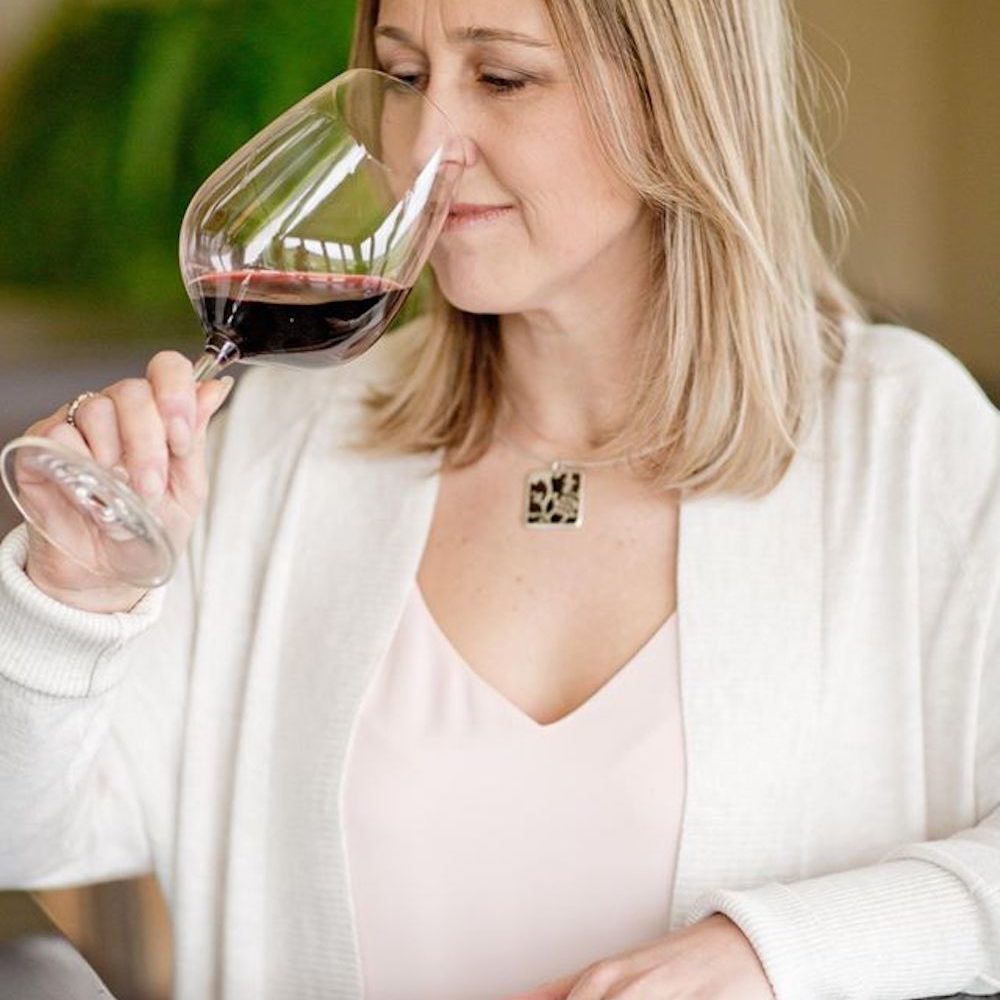



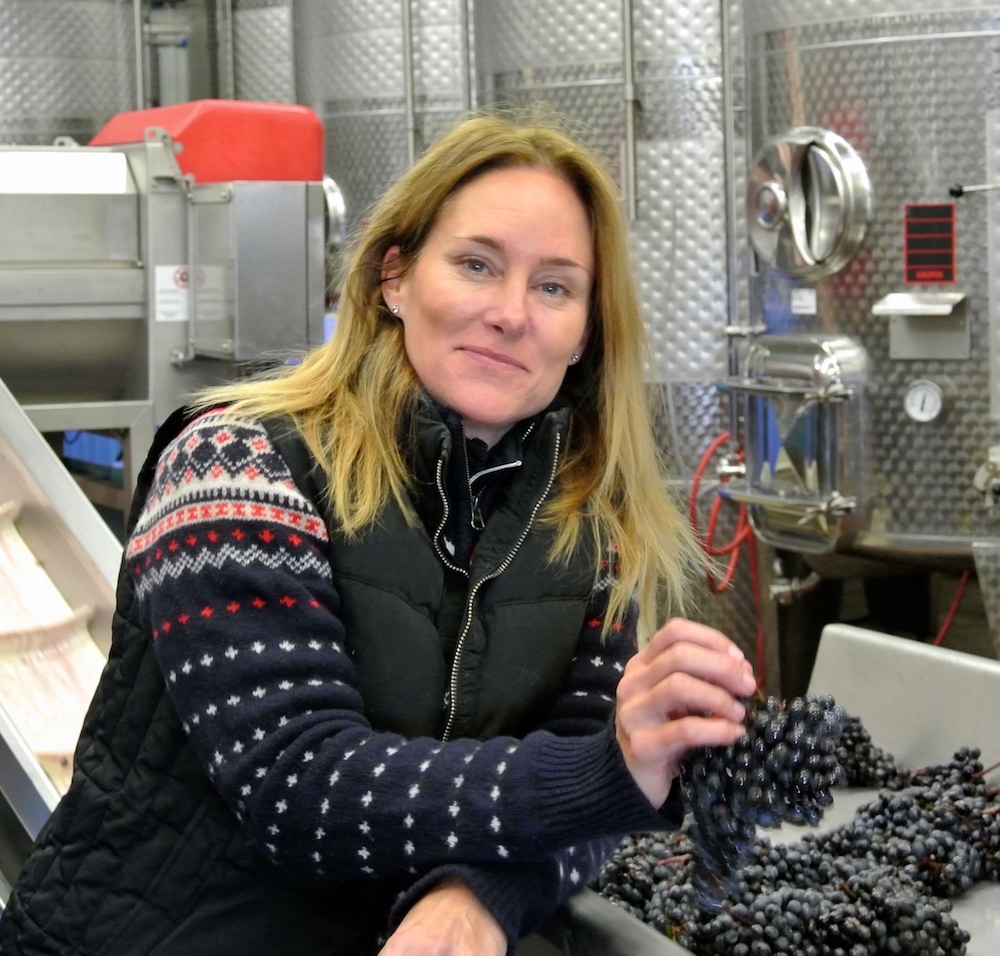
Comment here